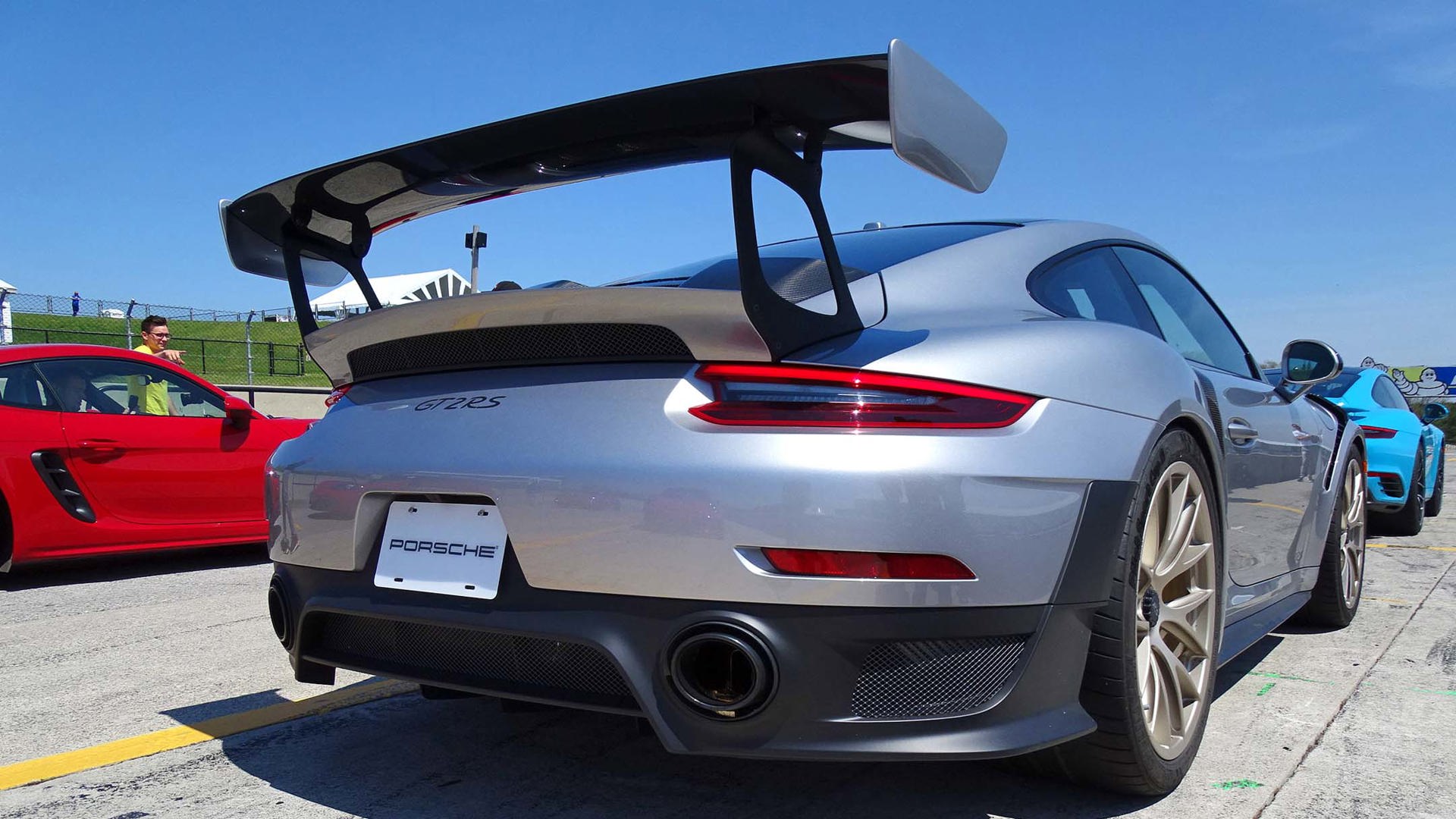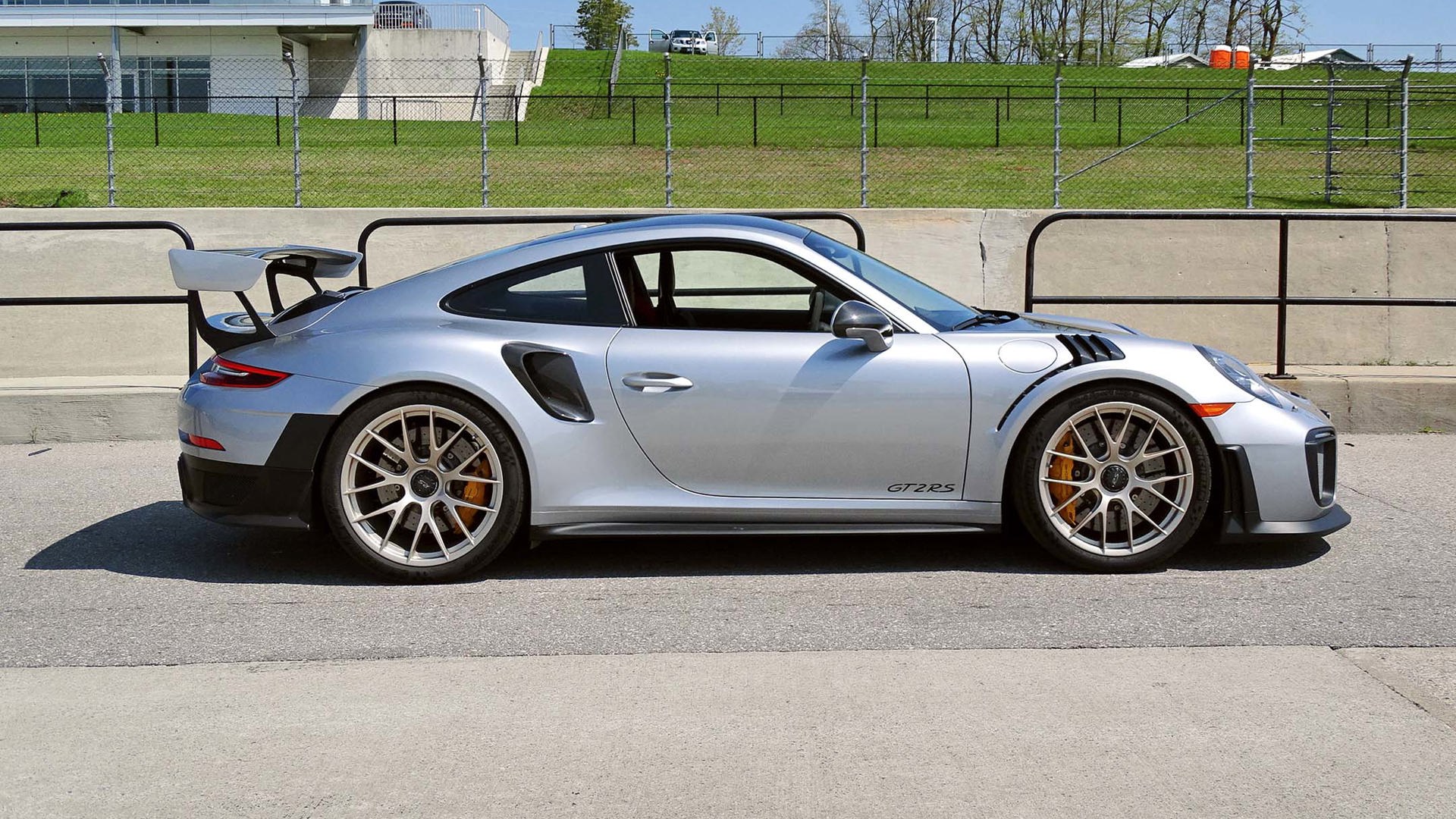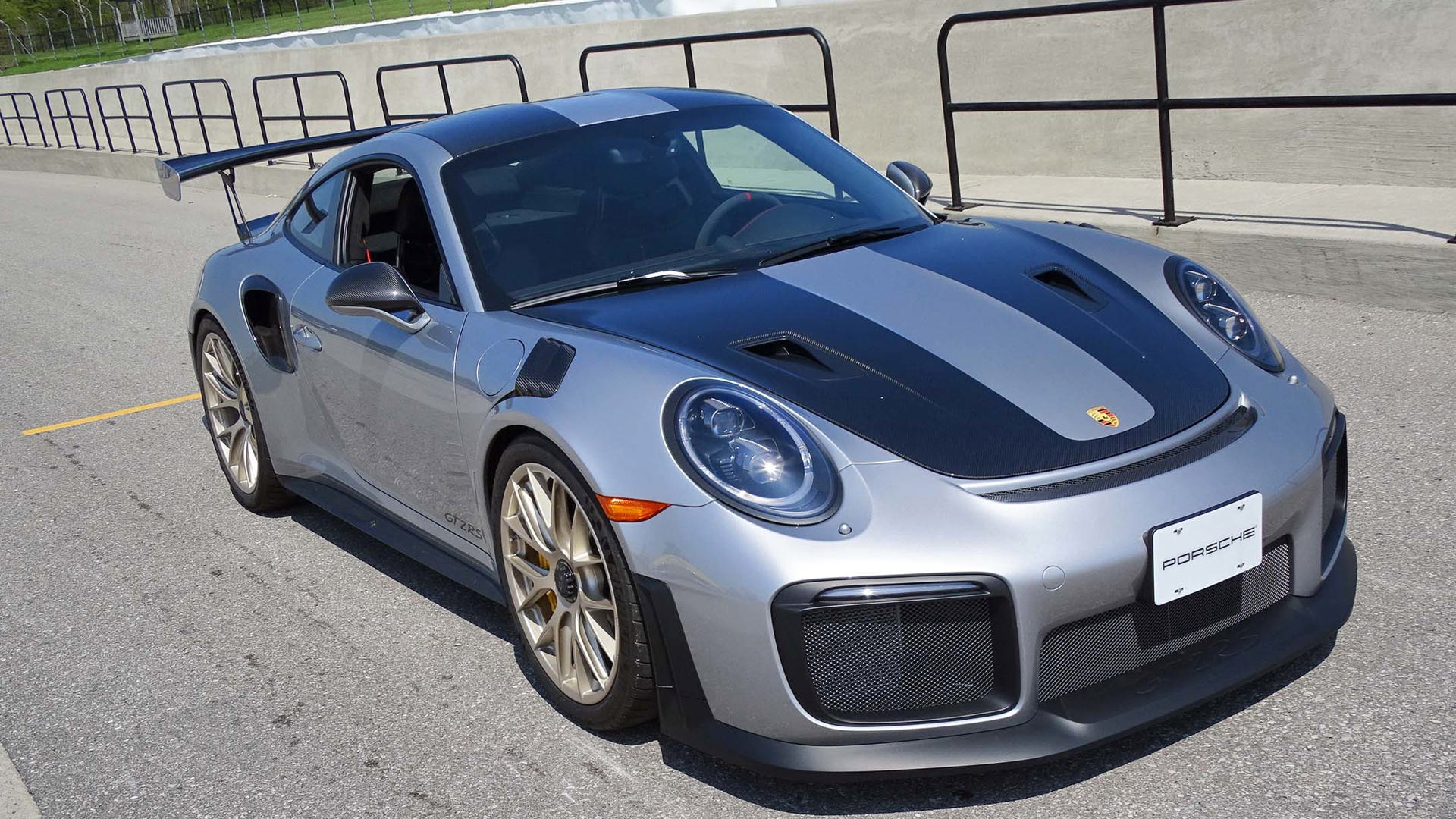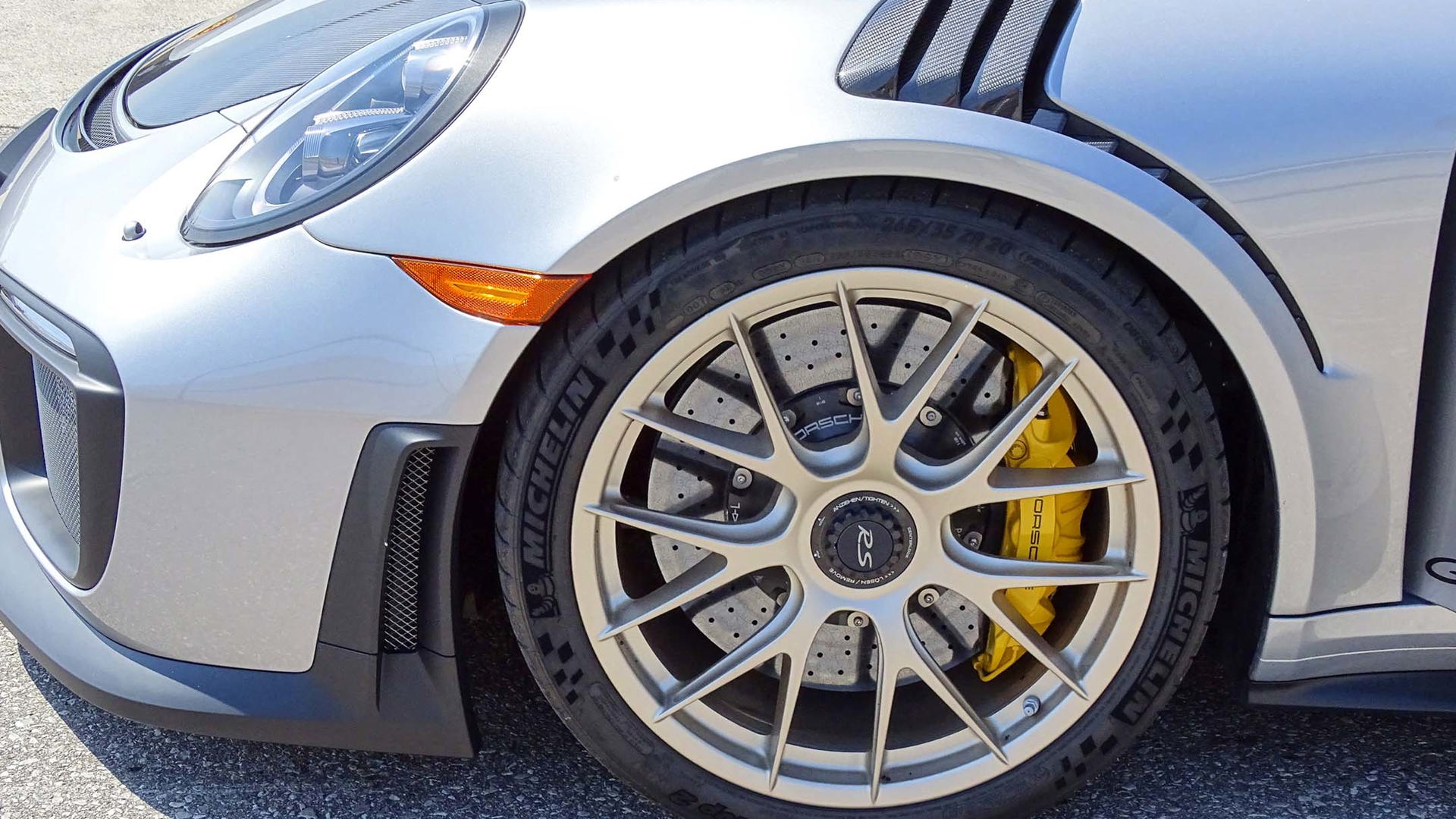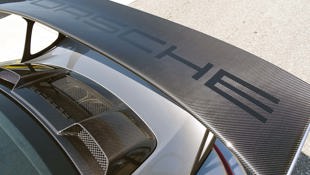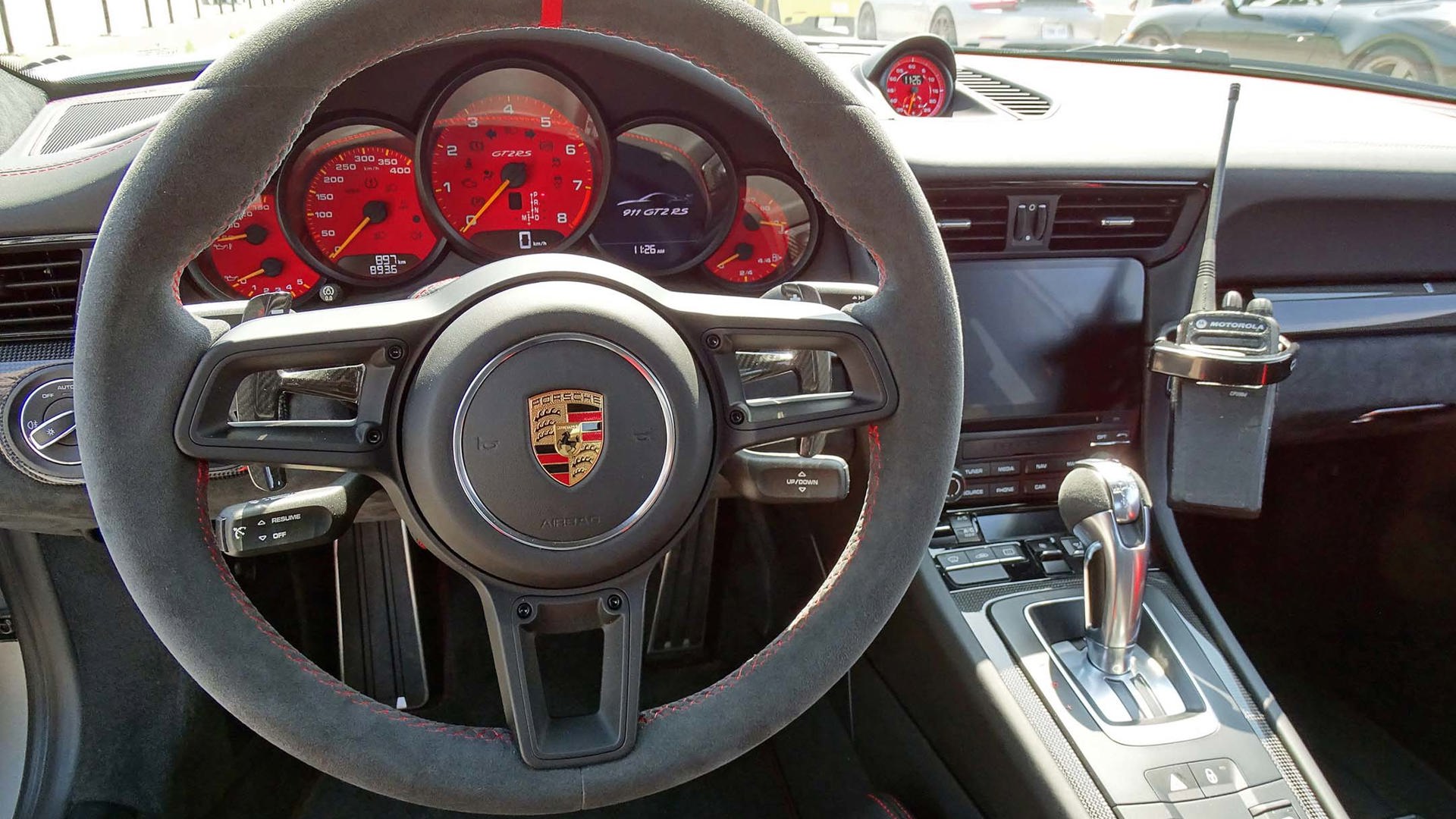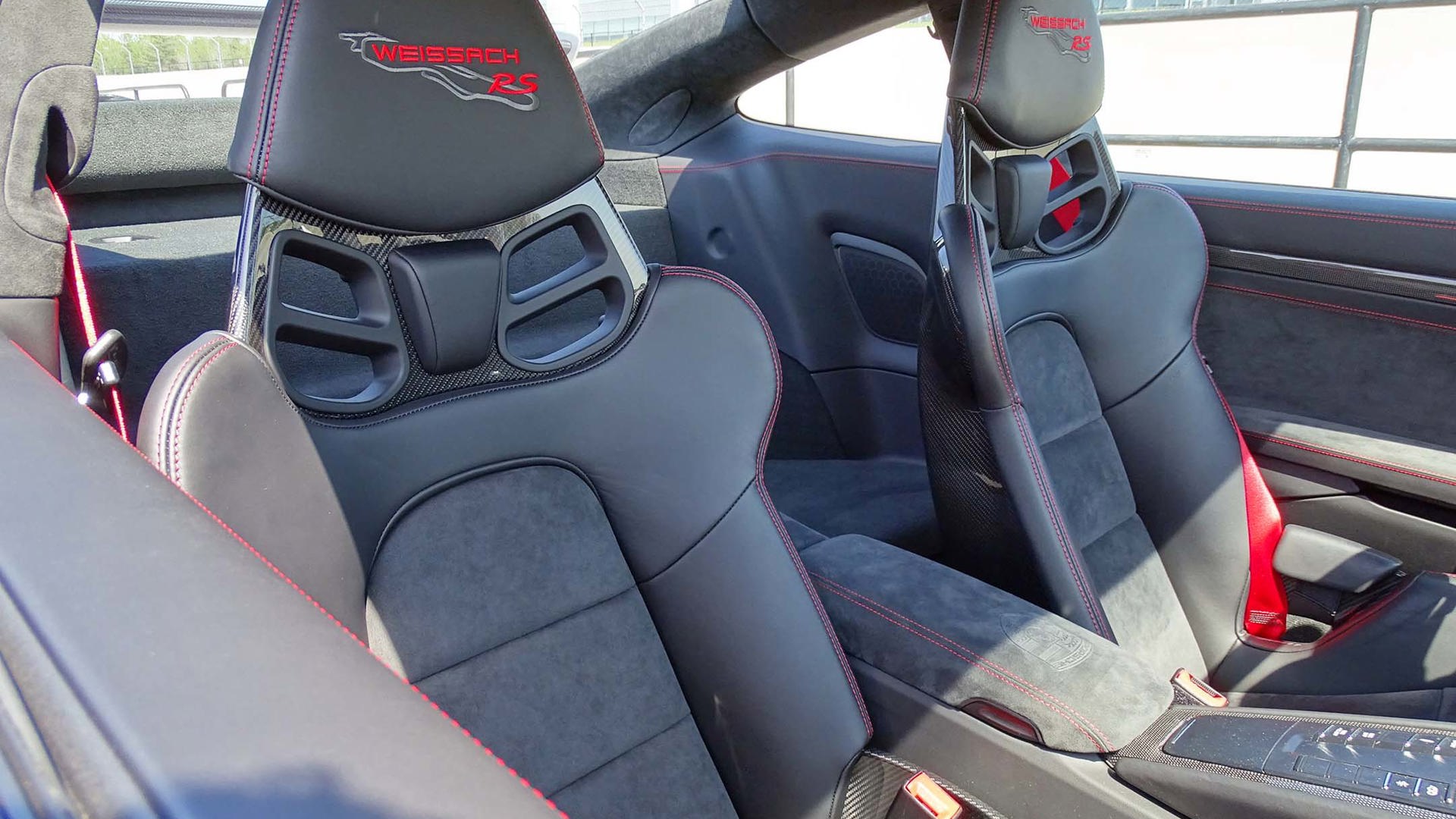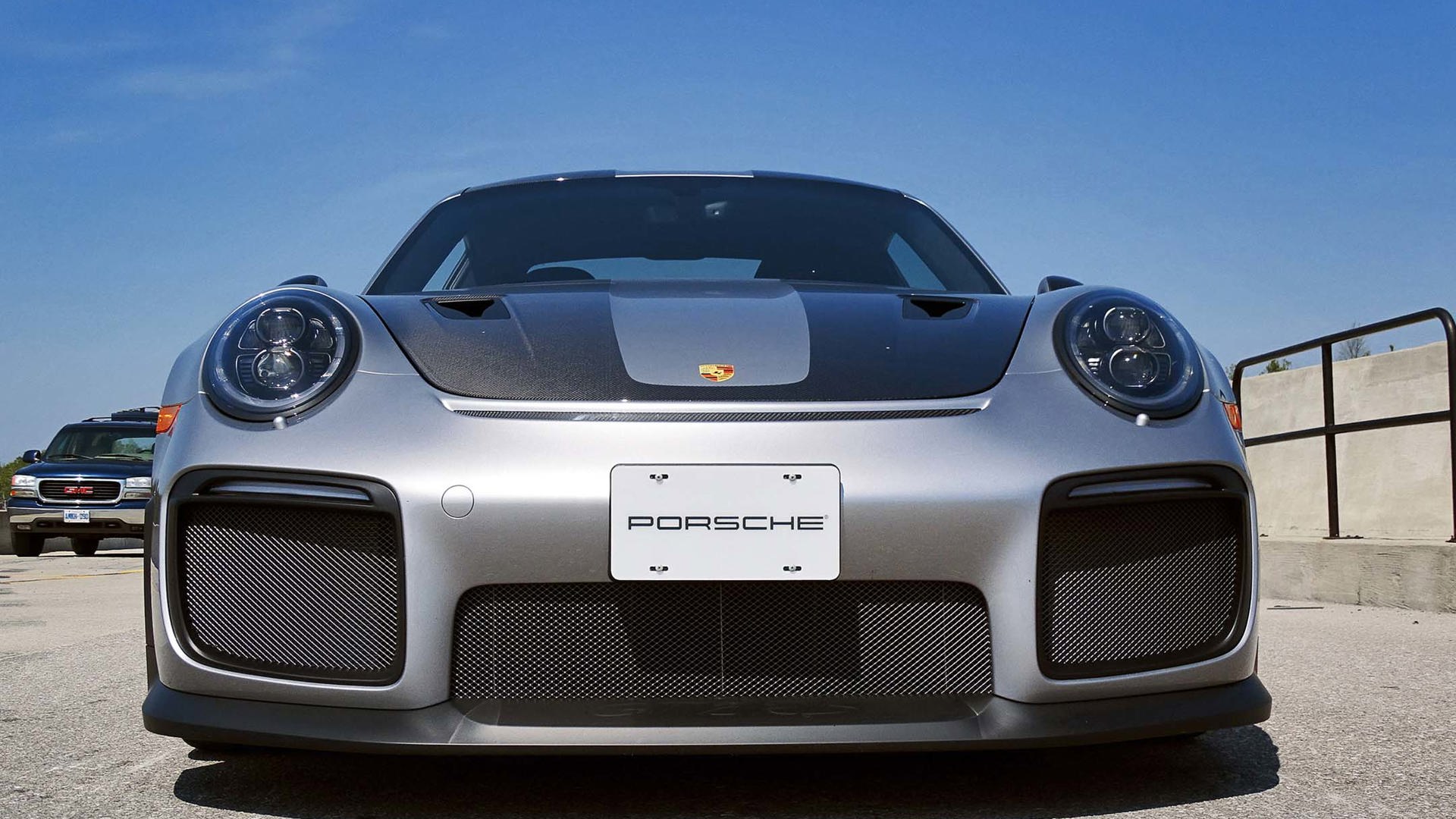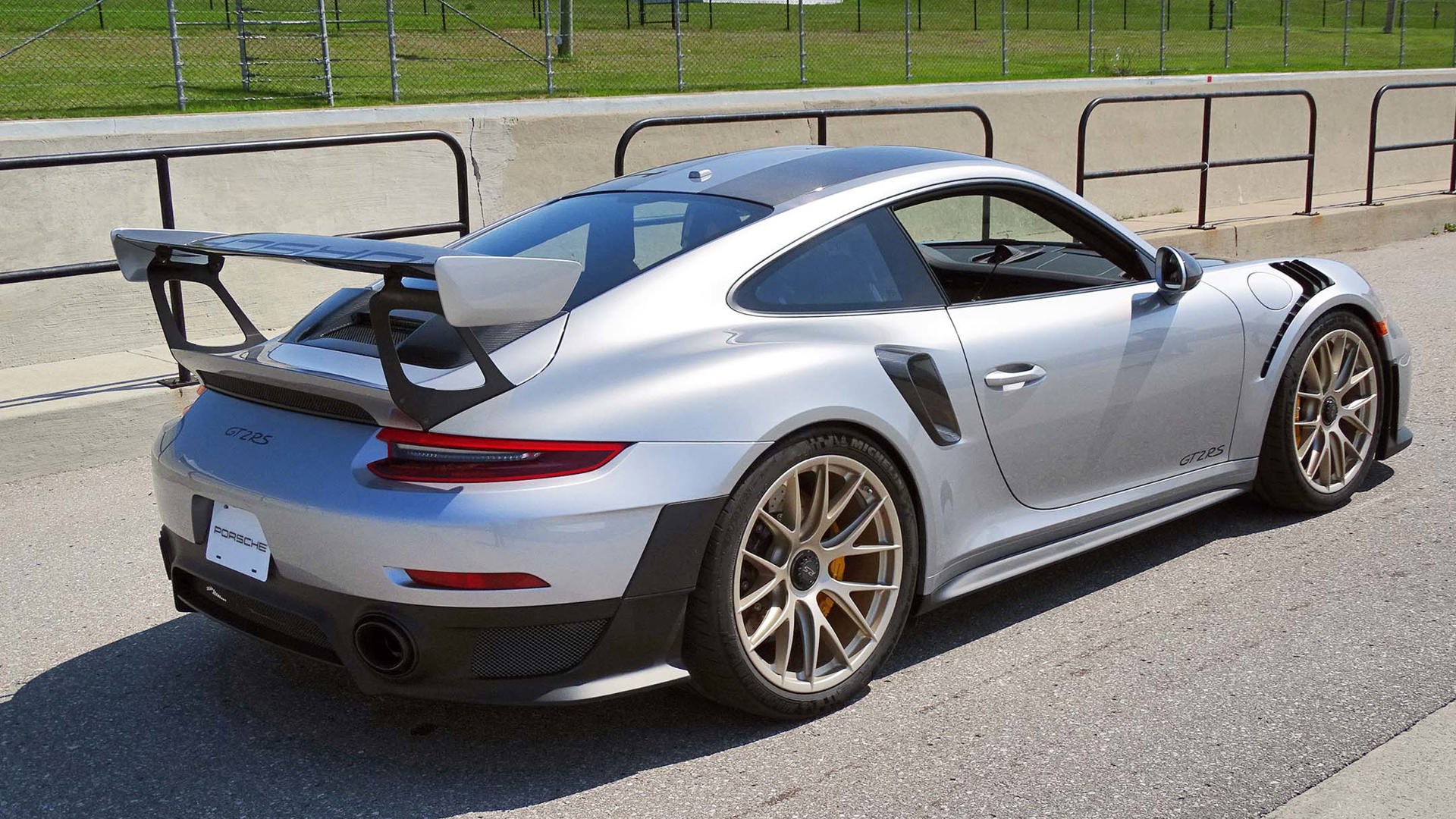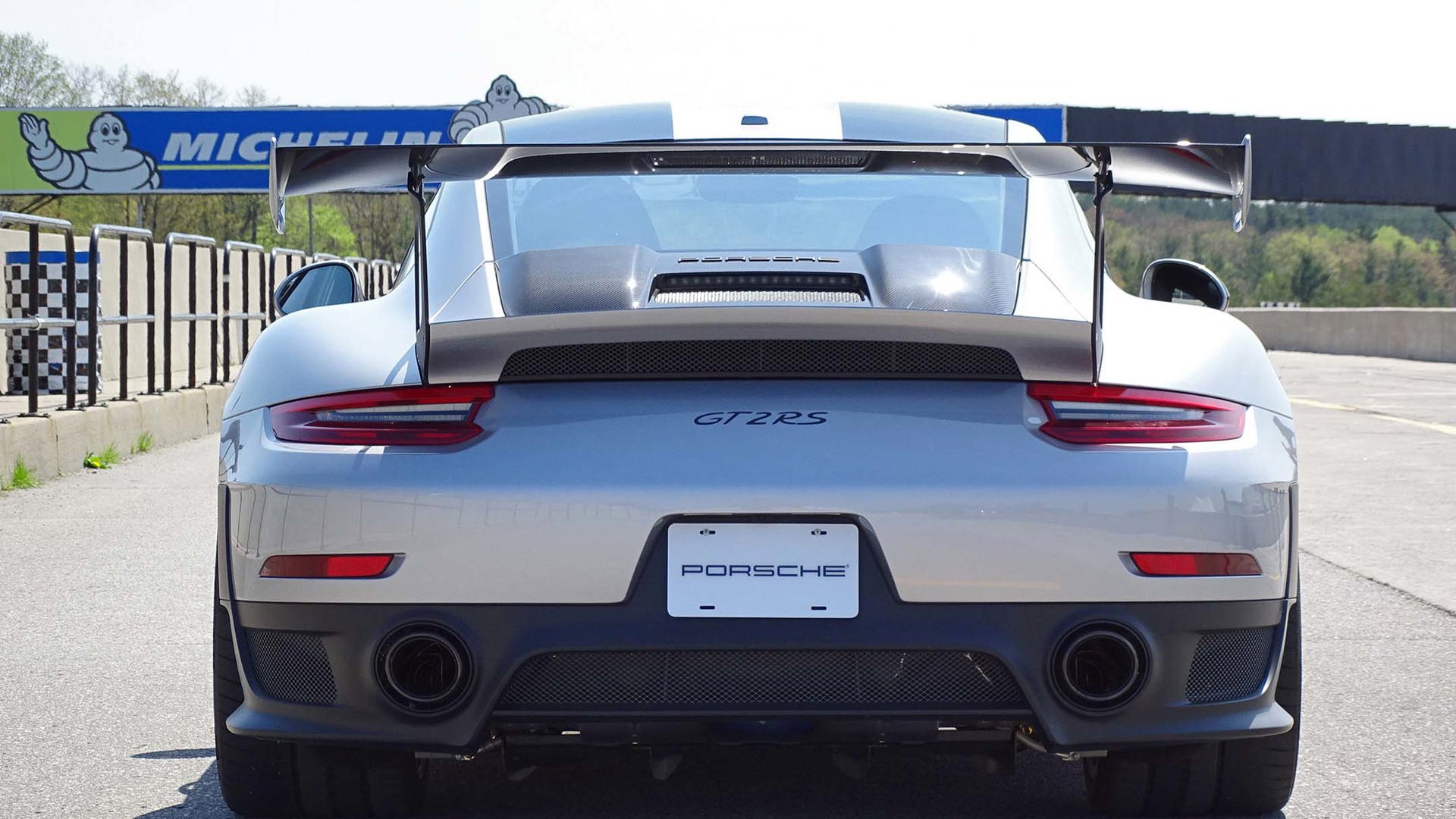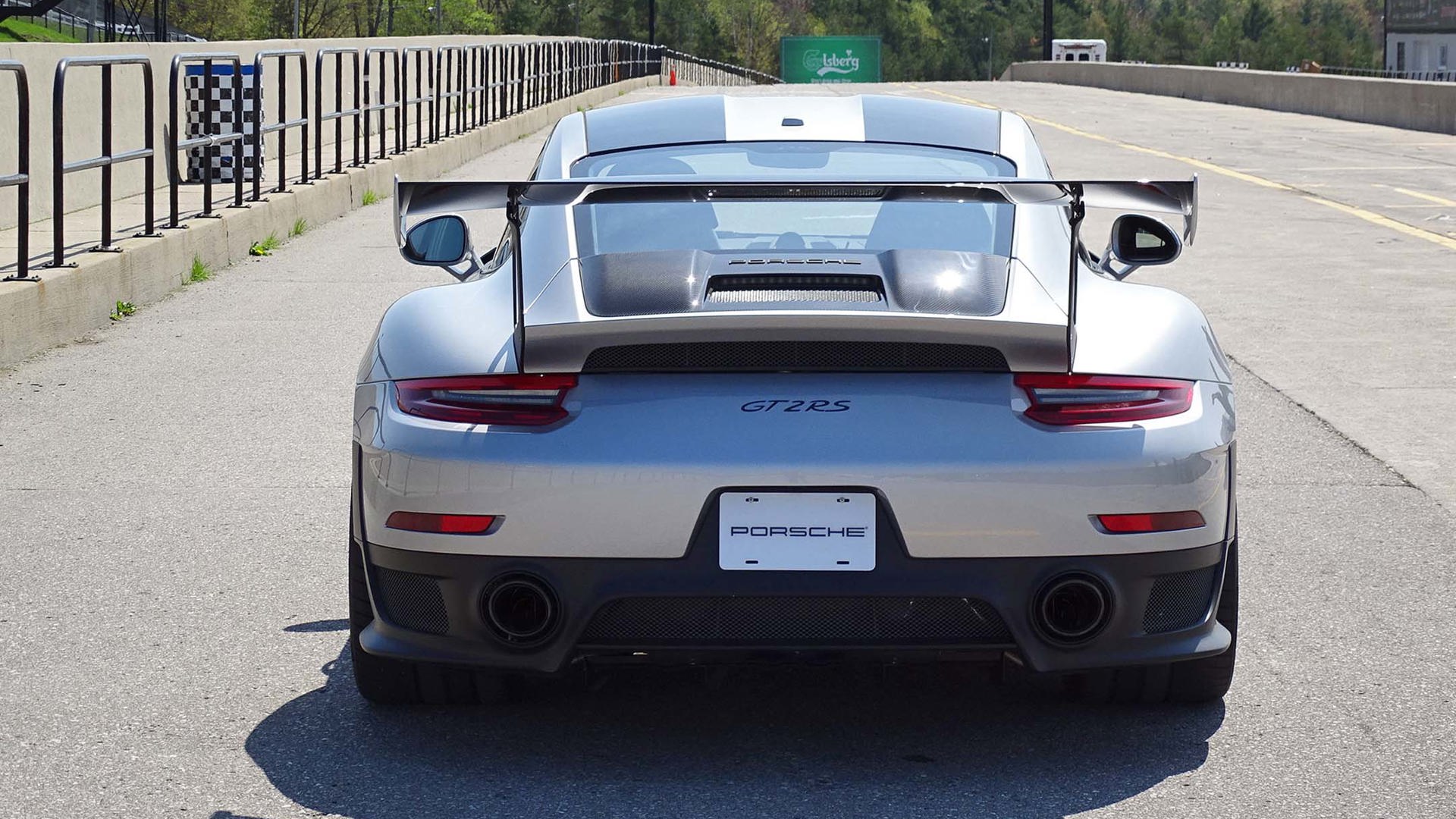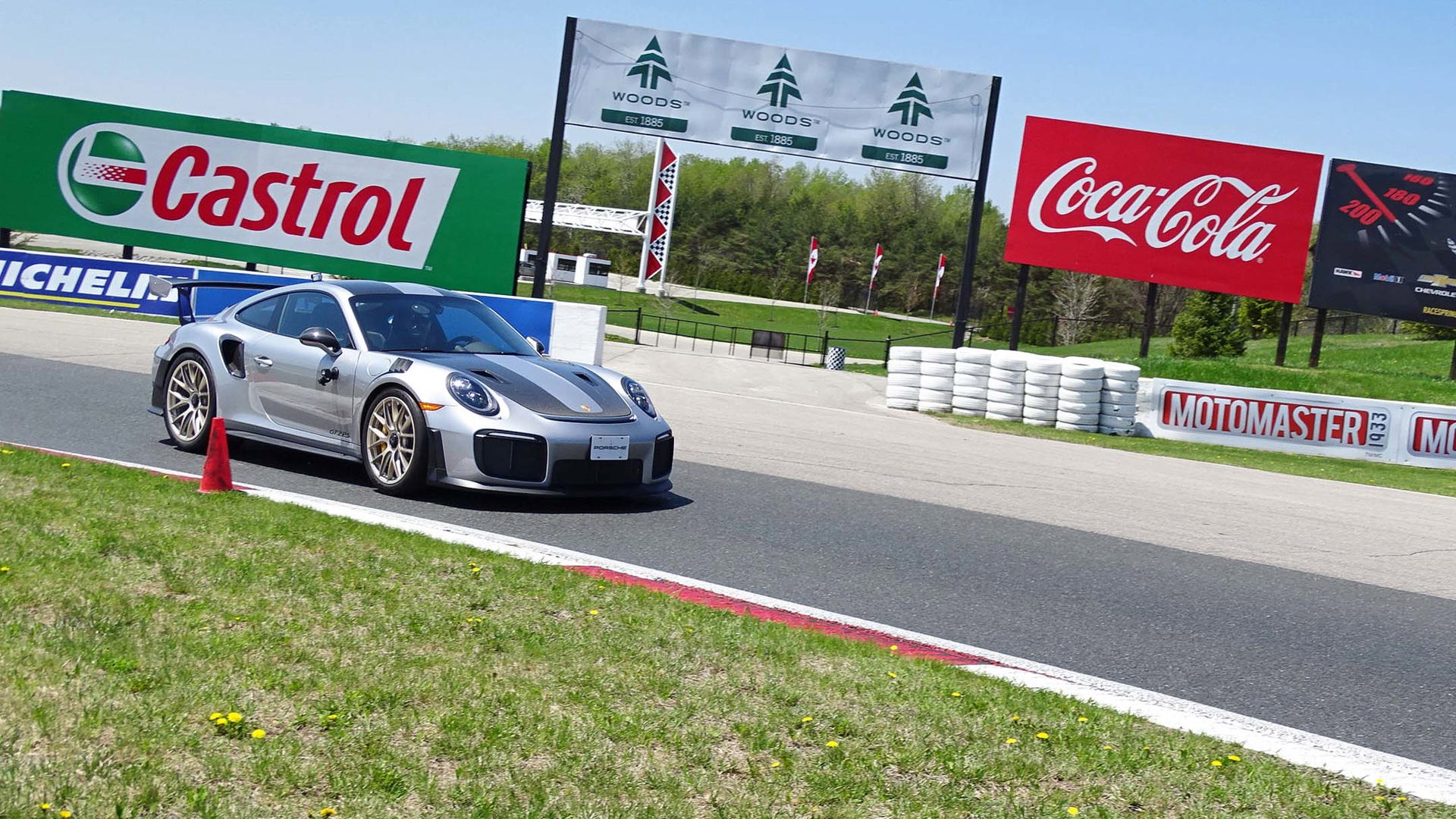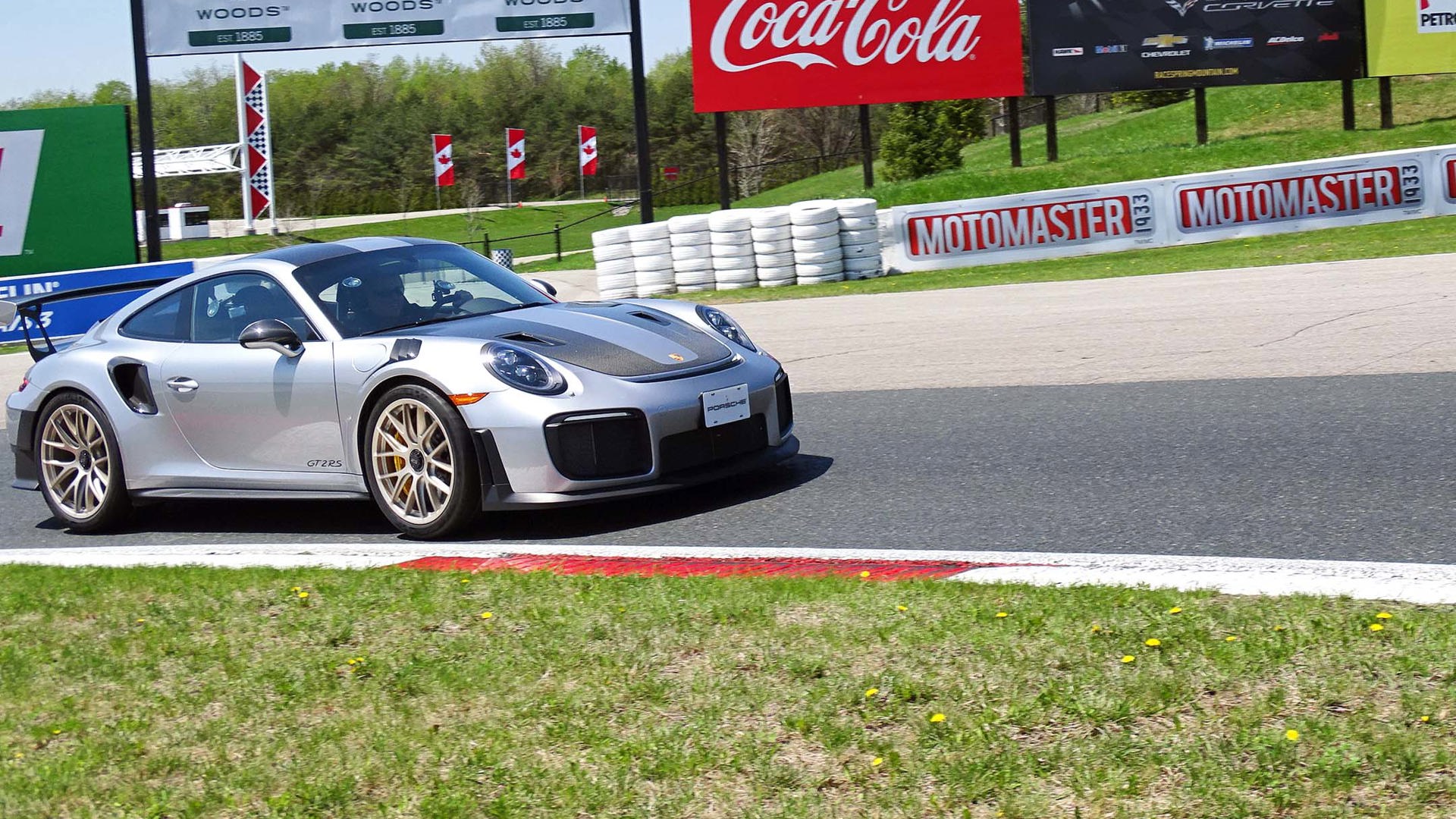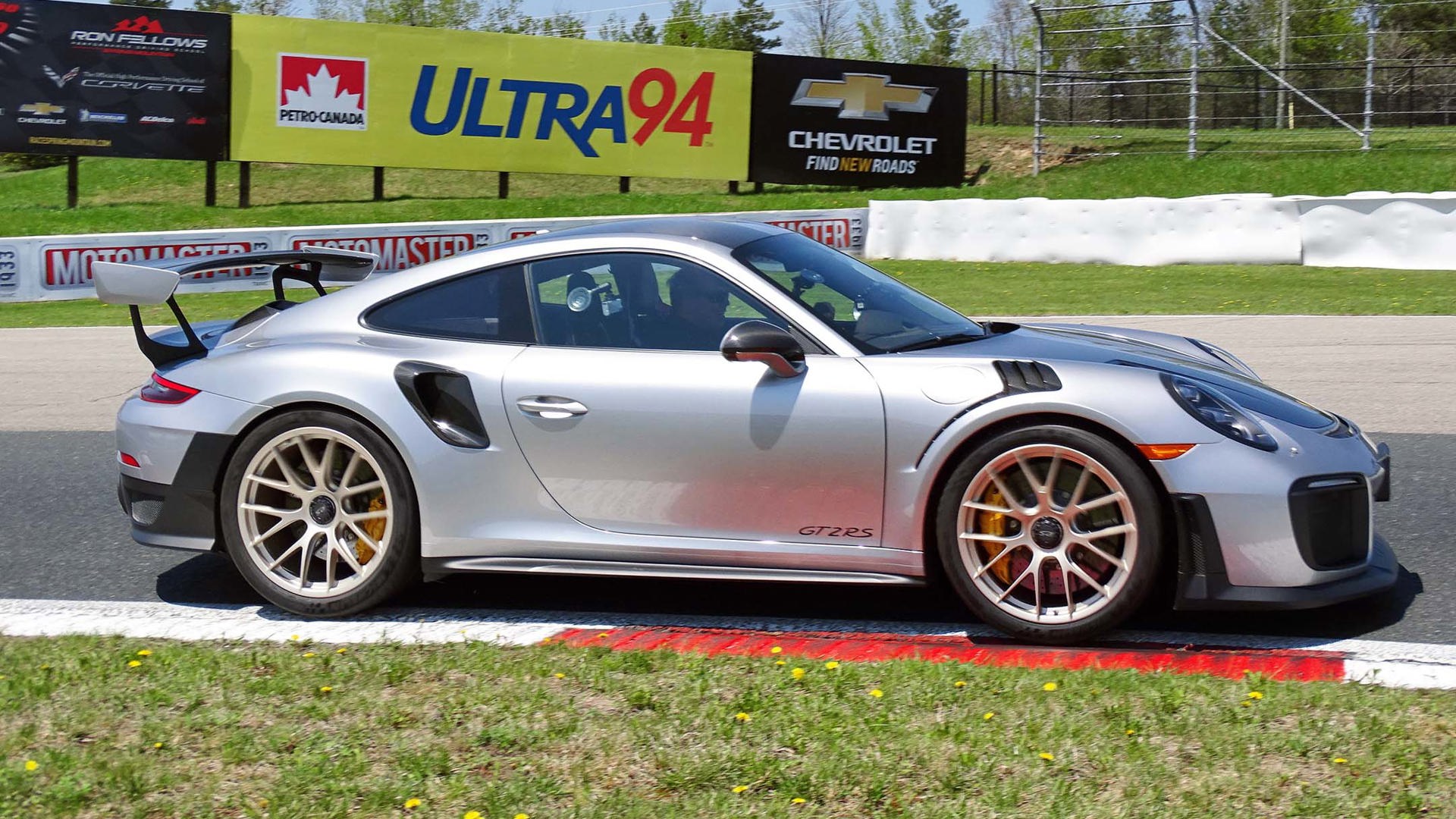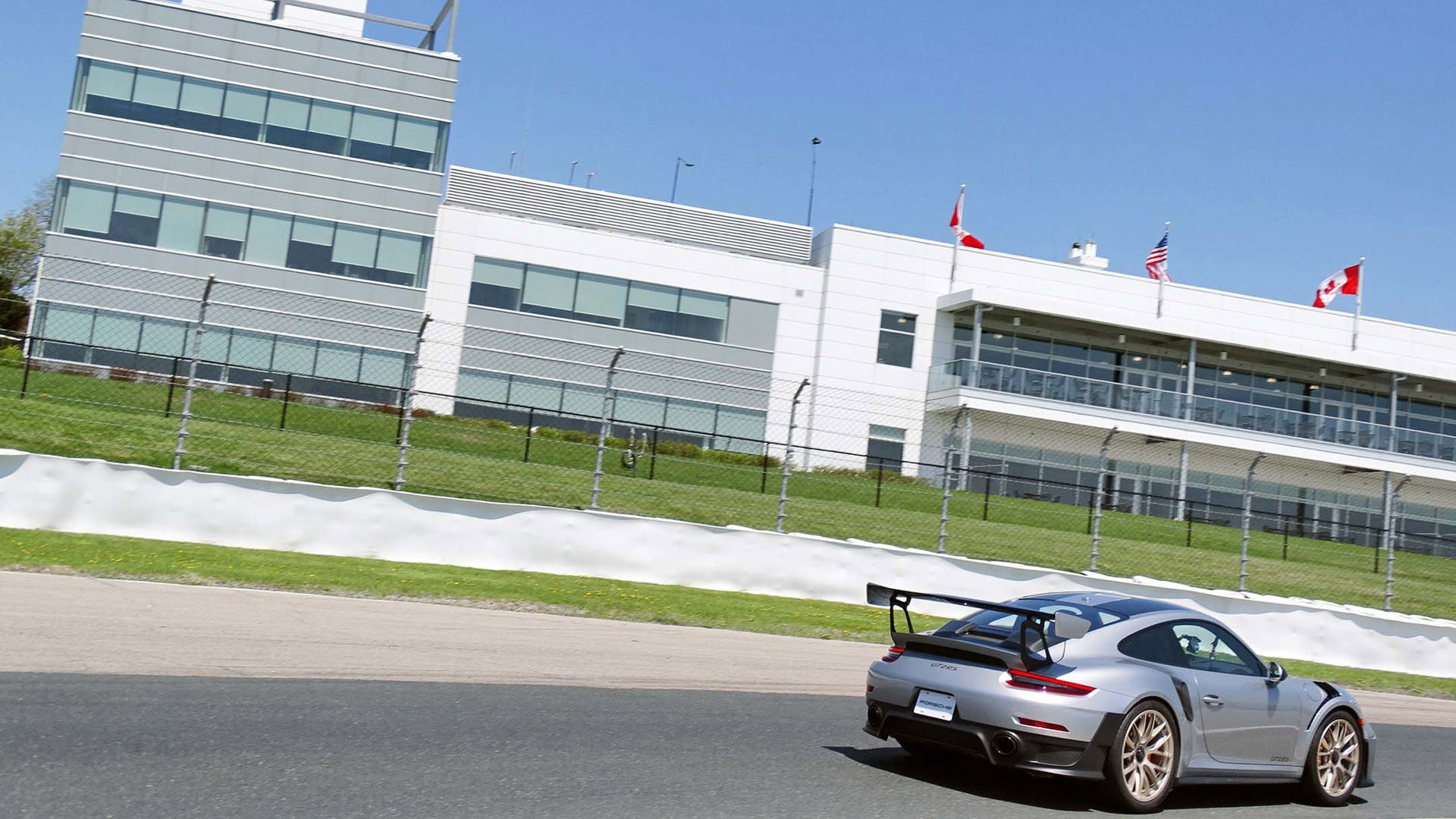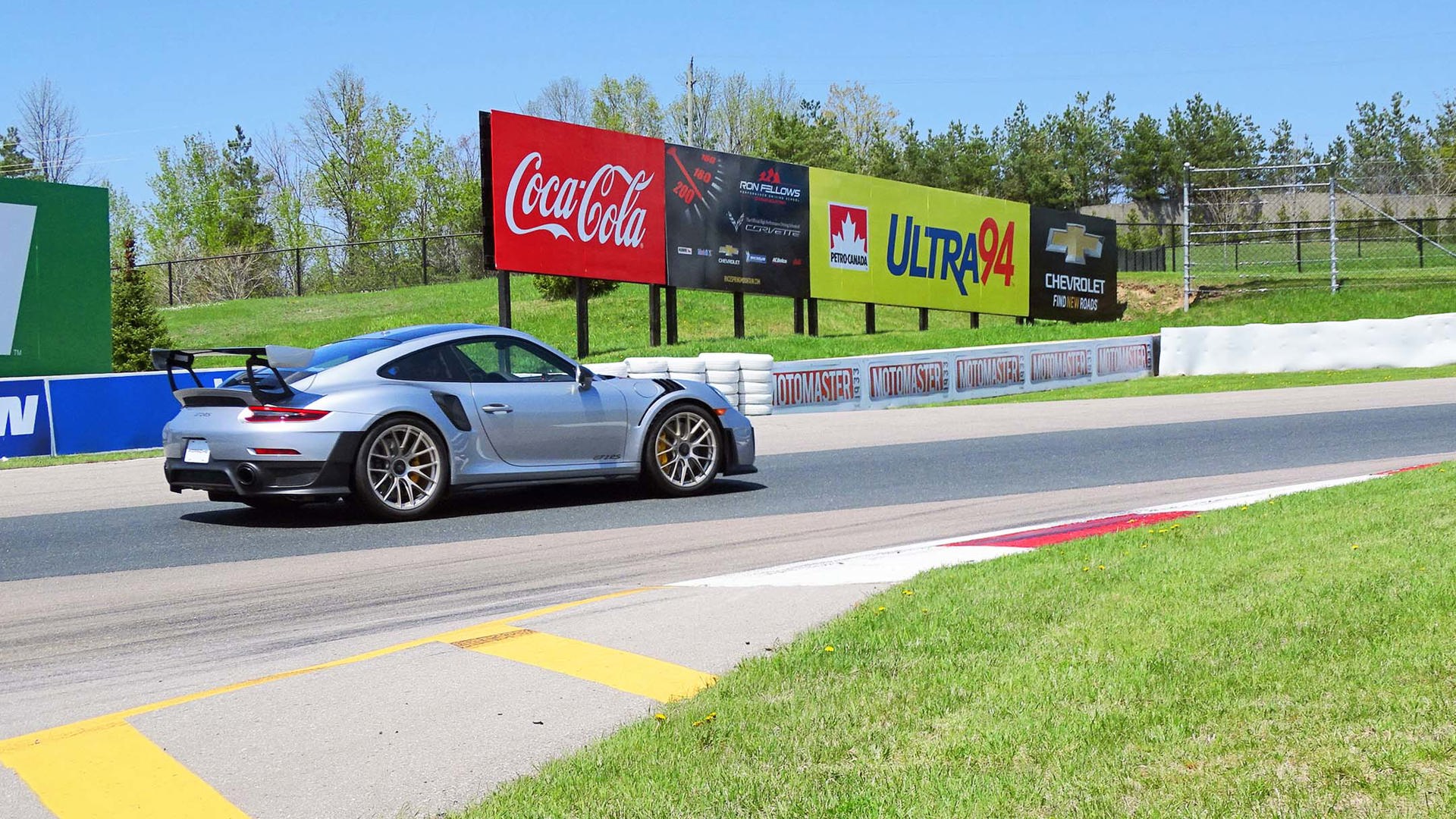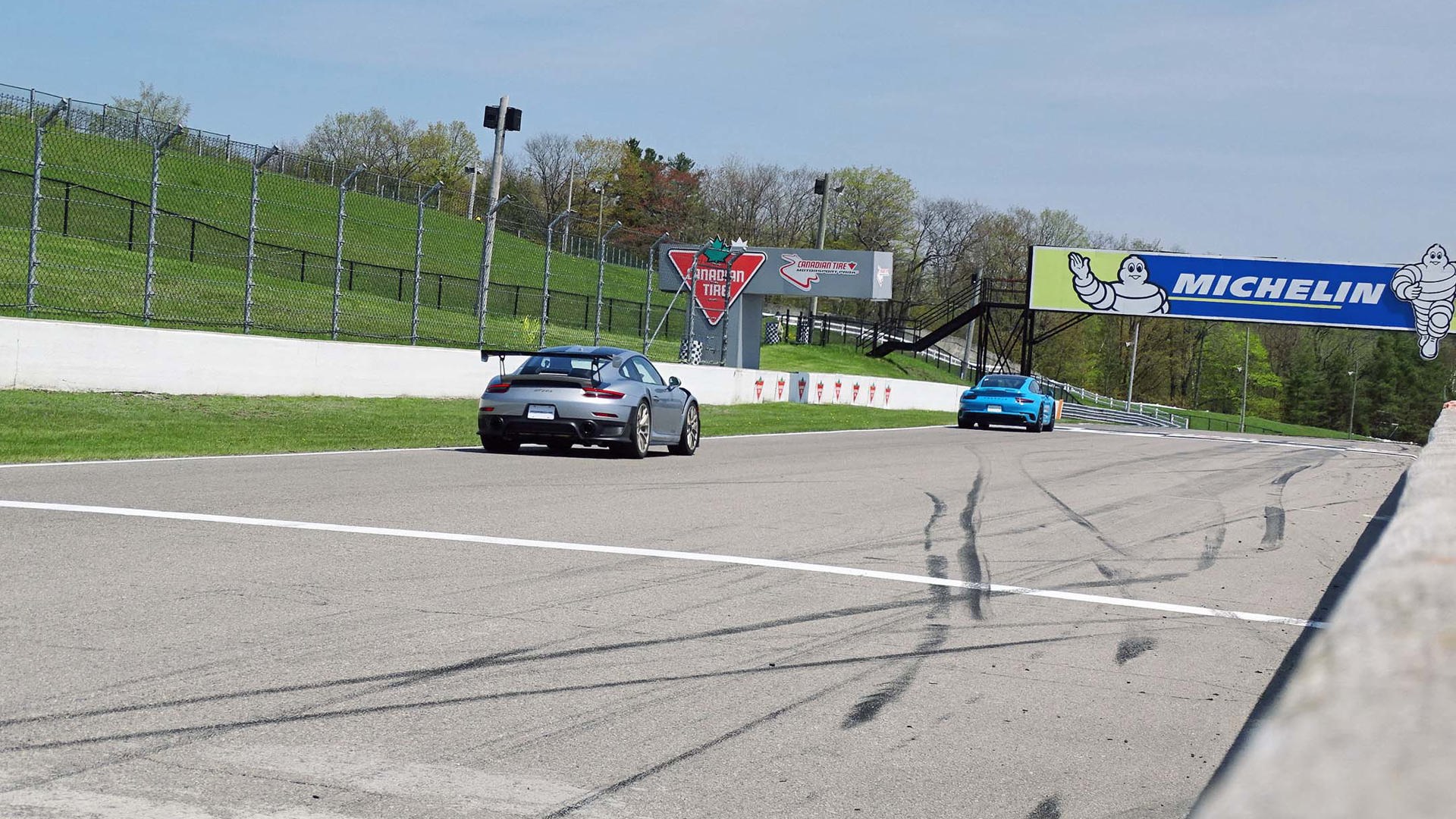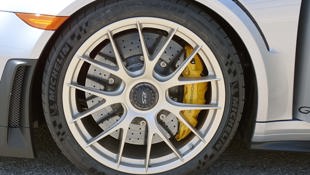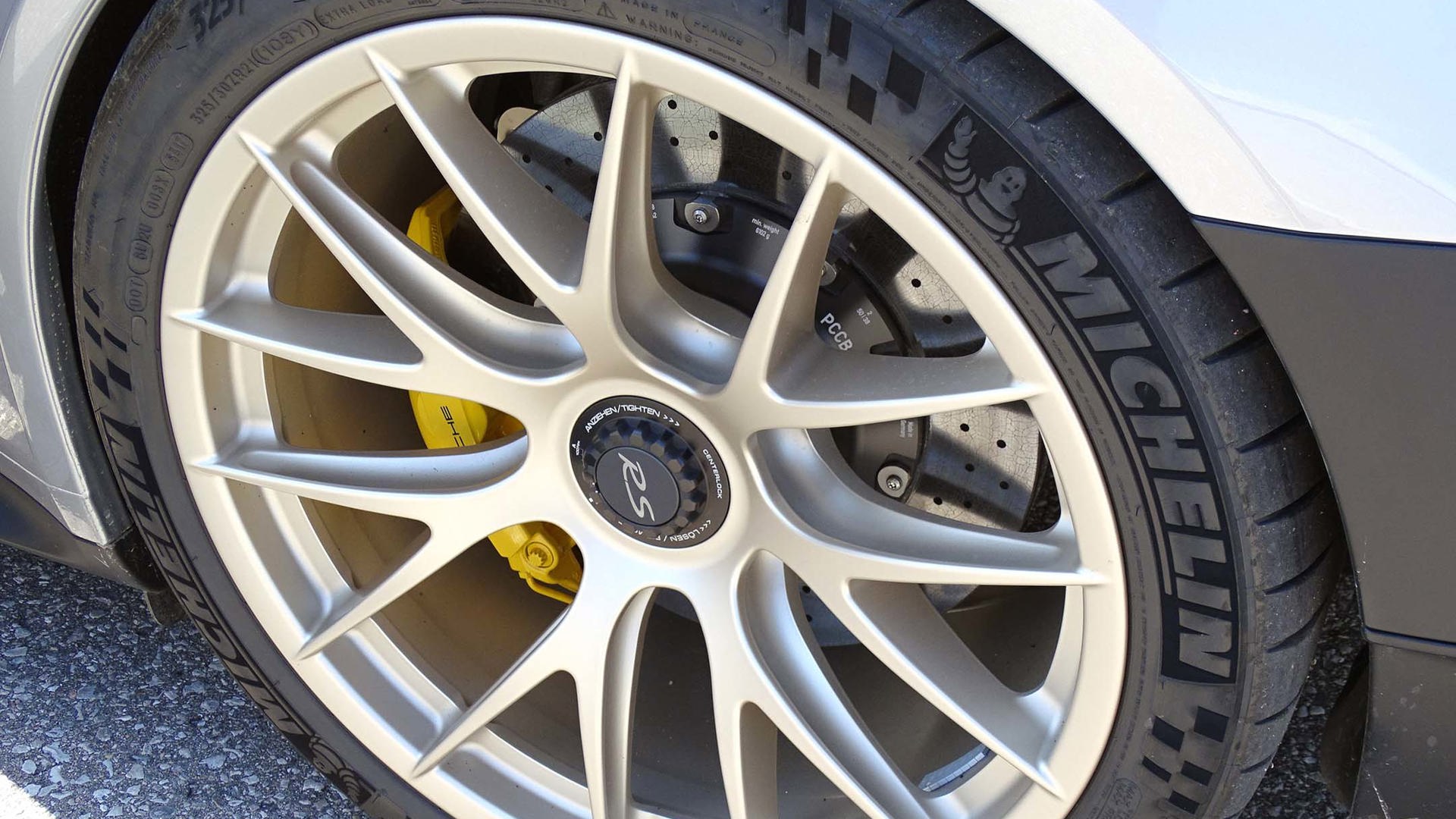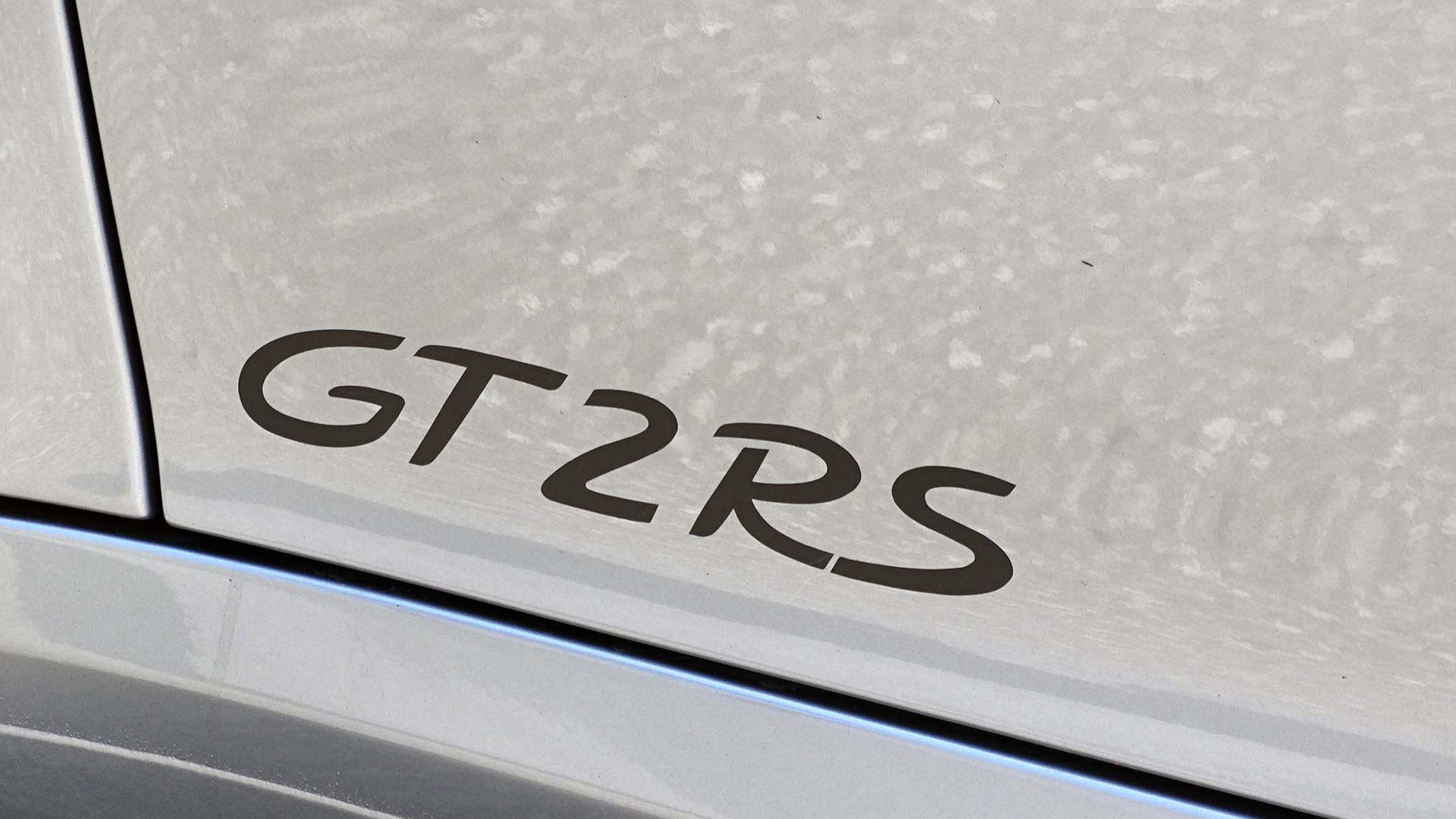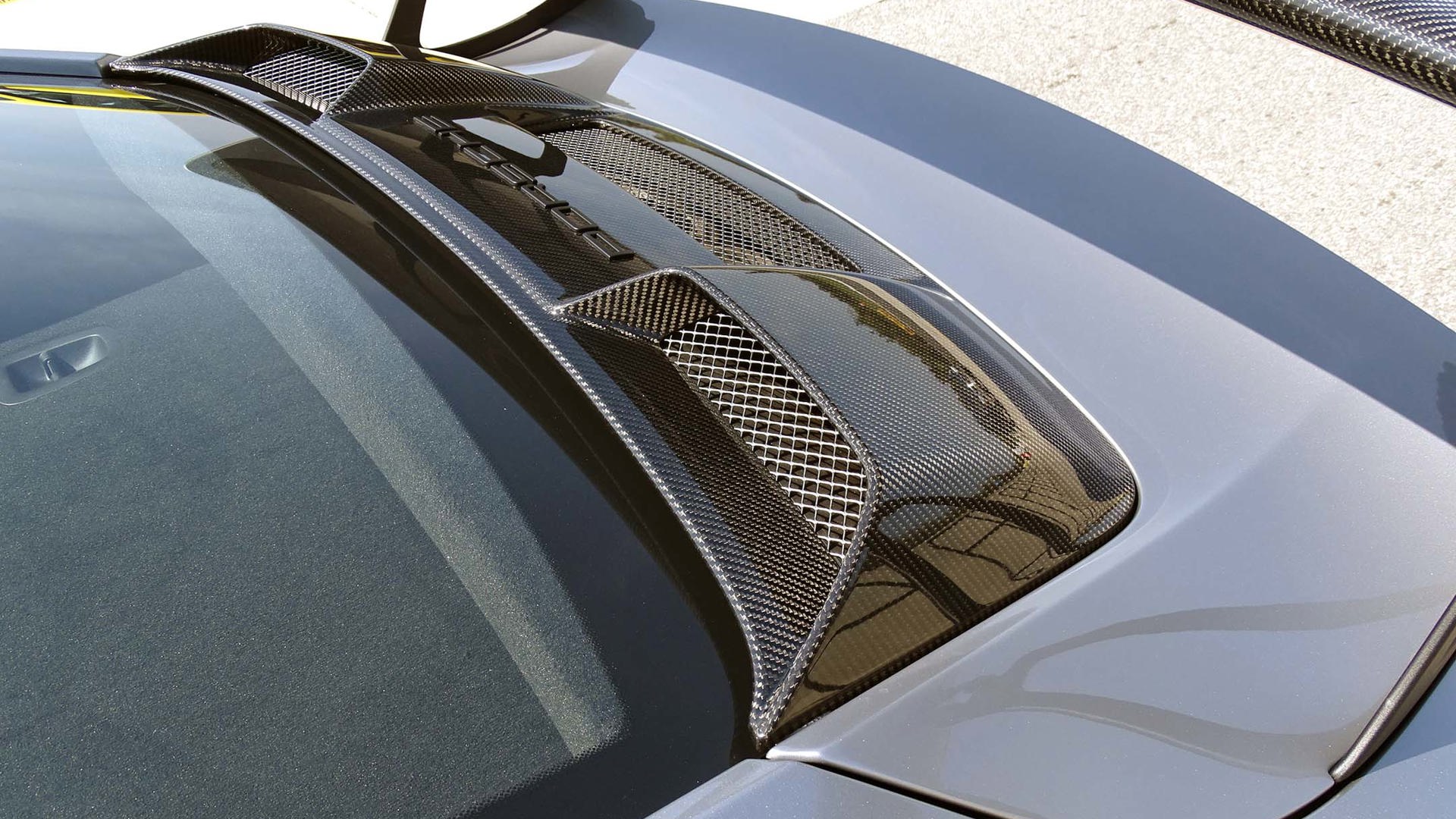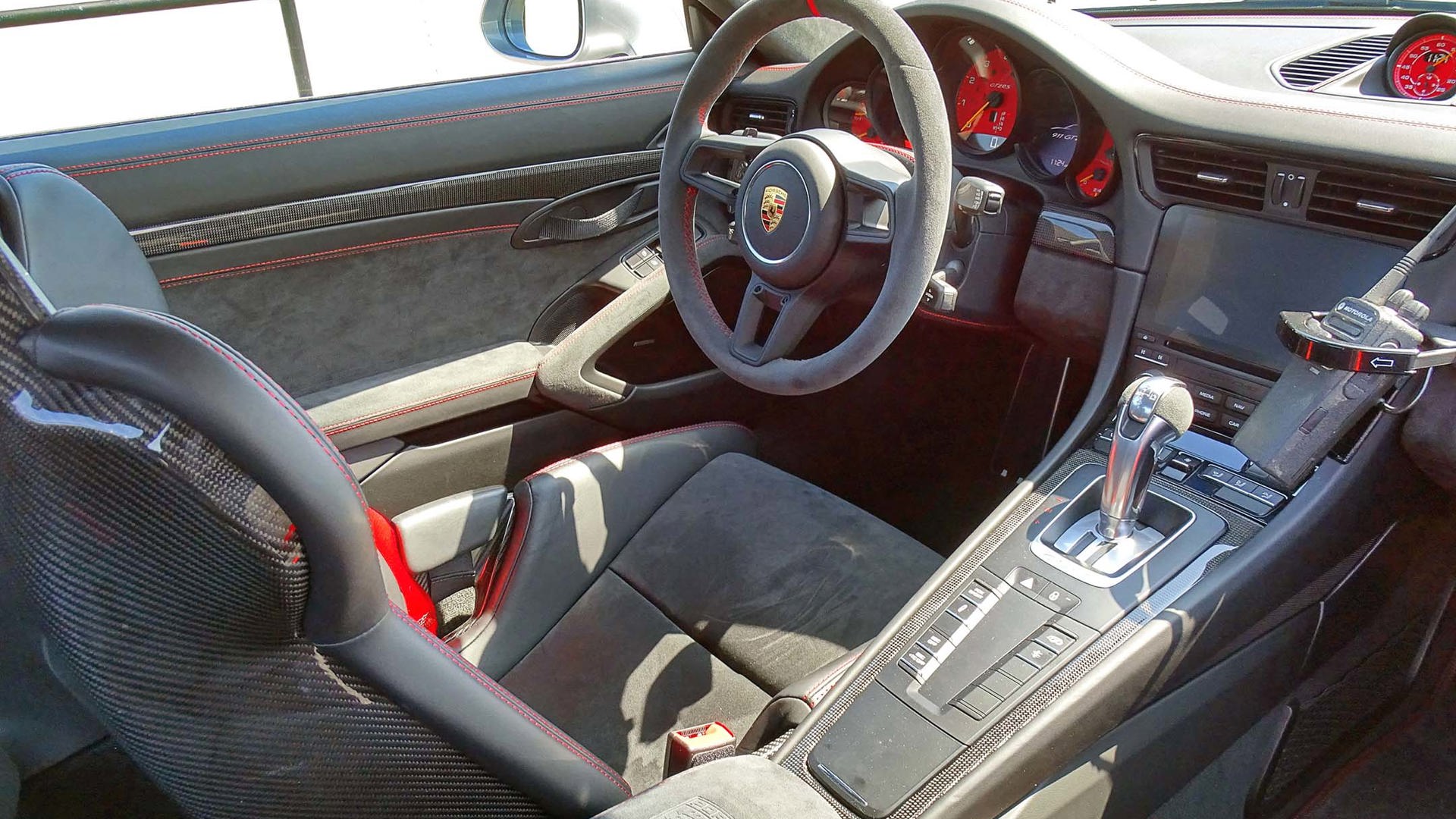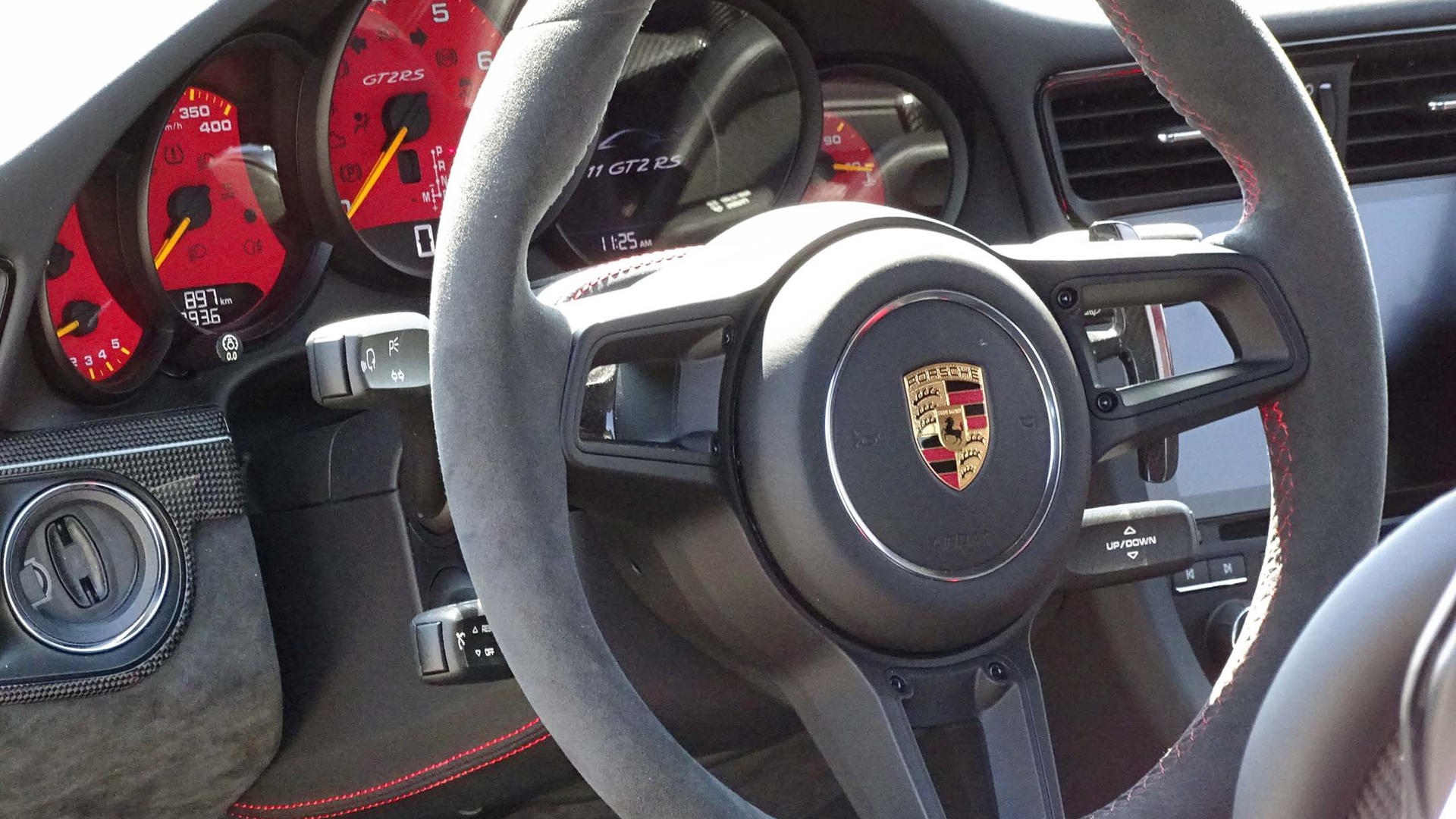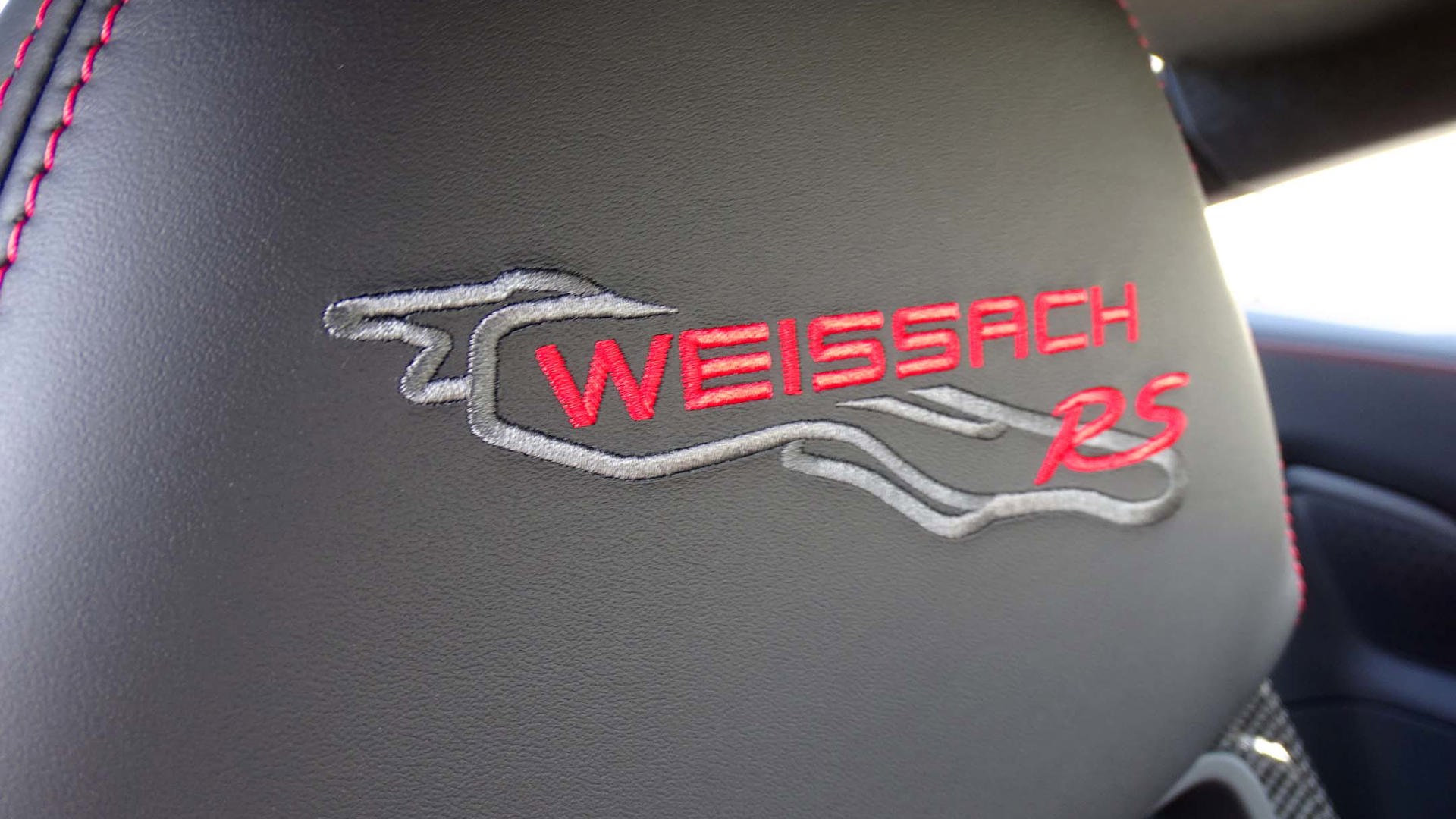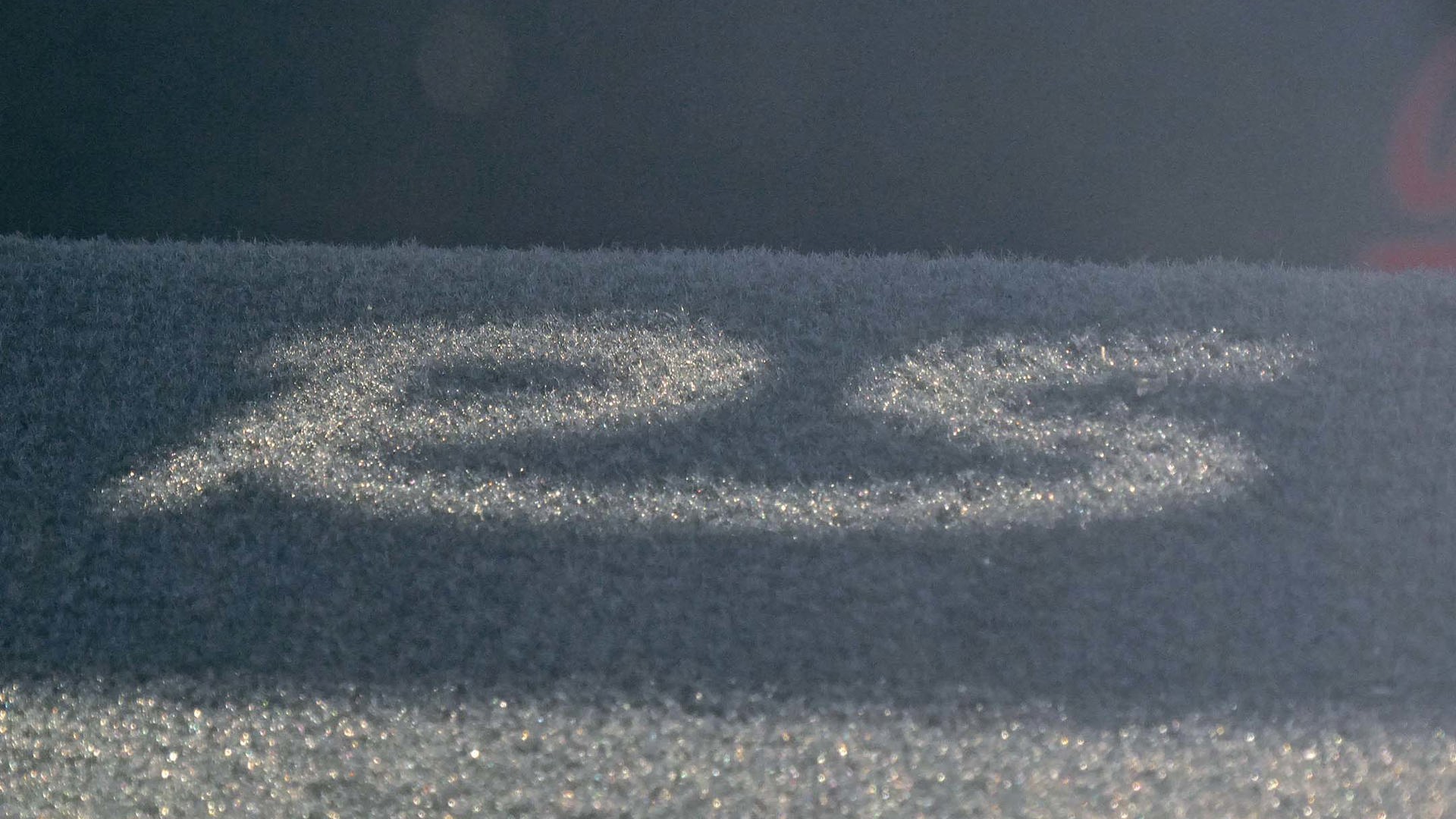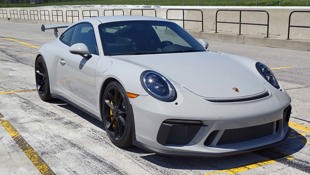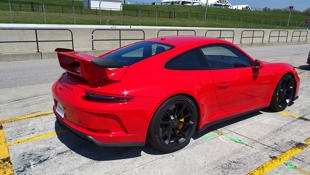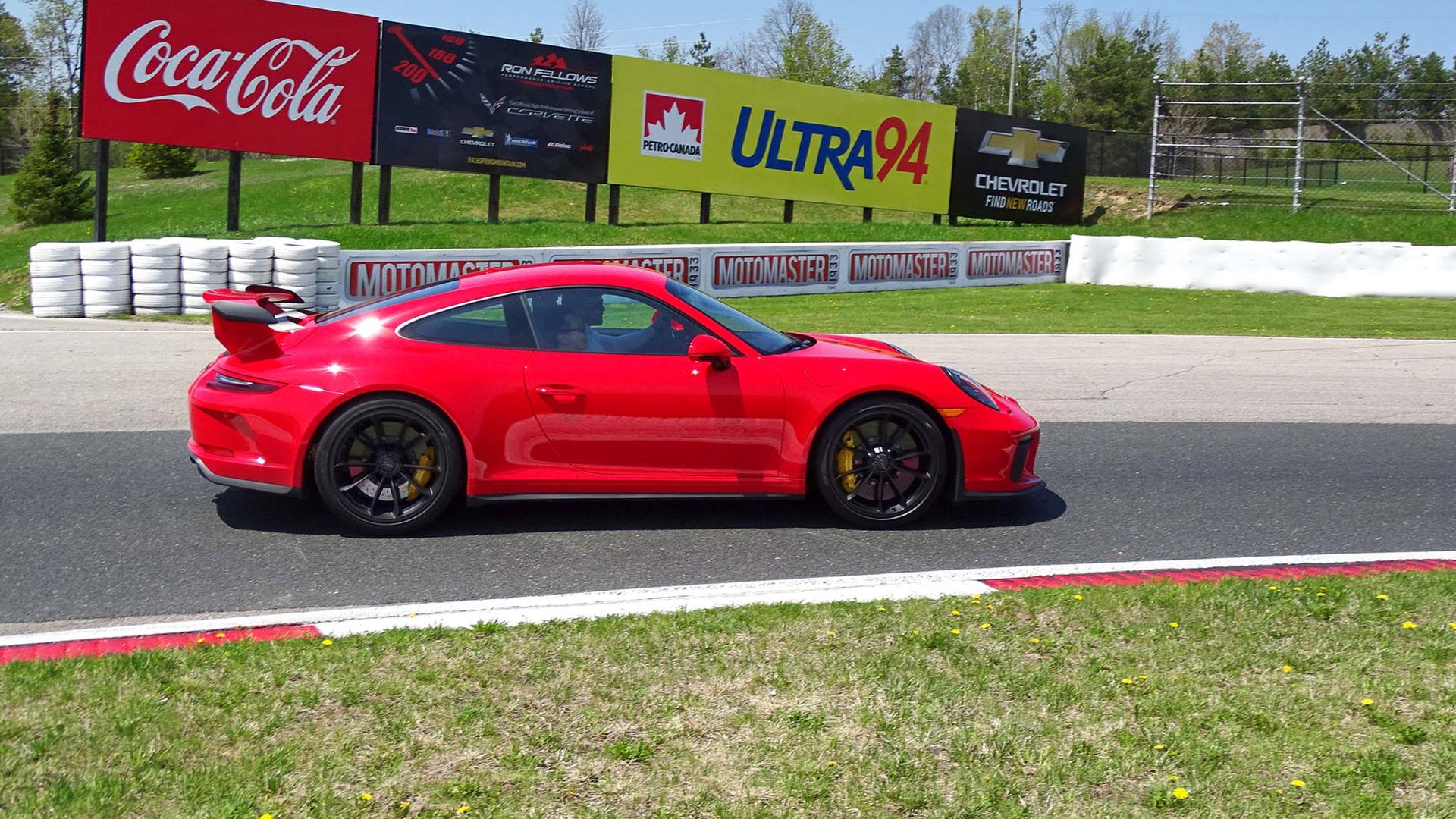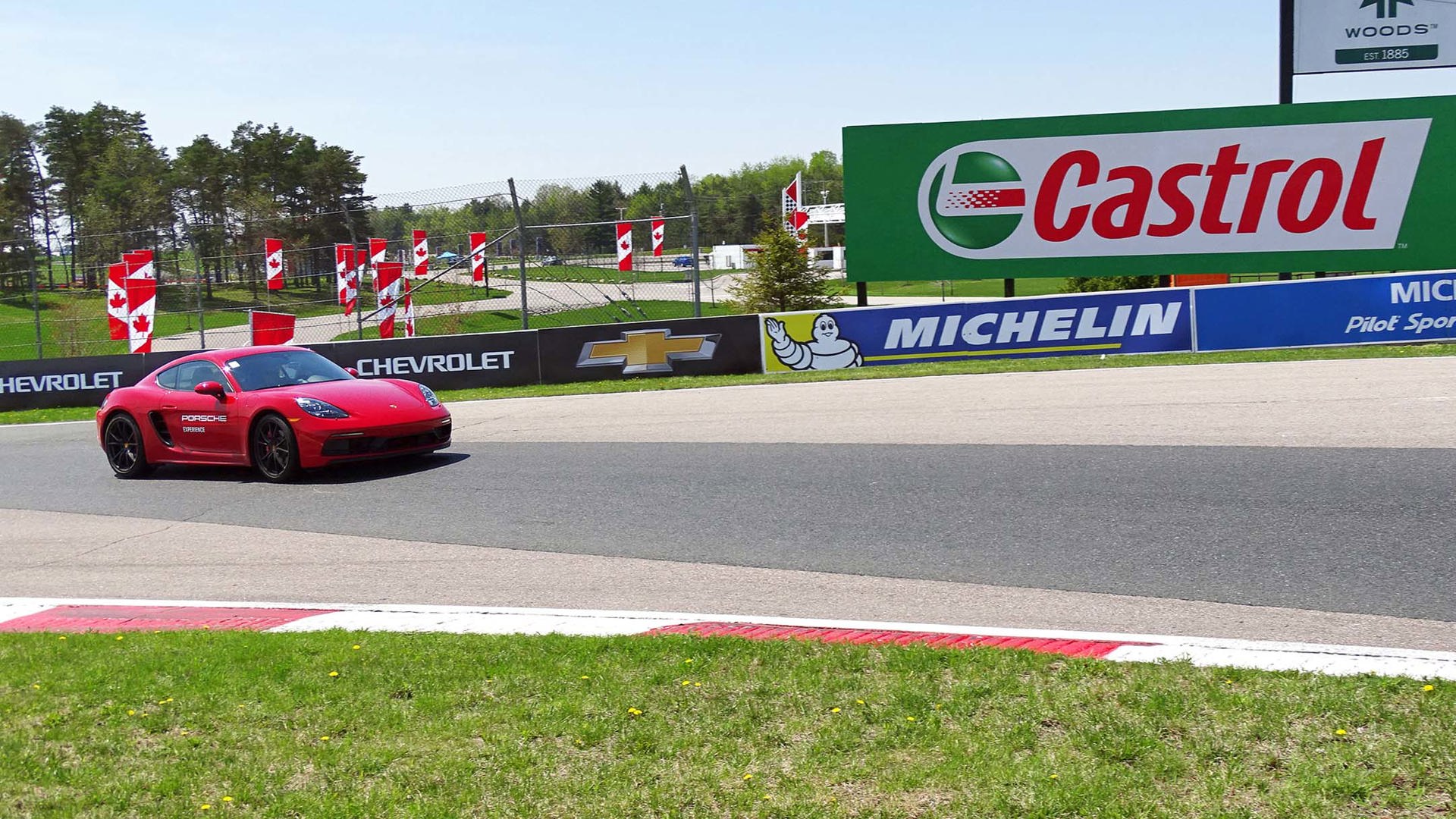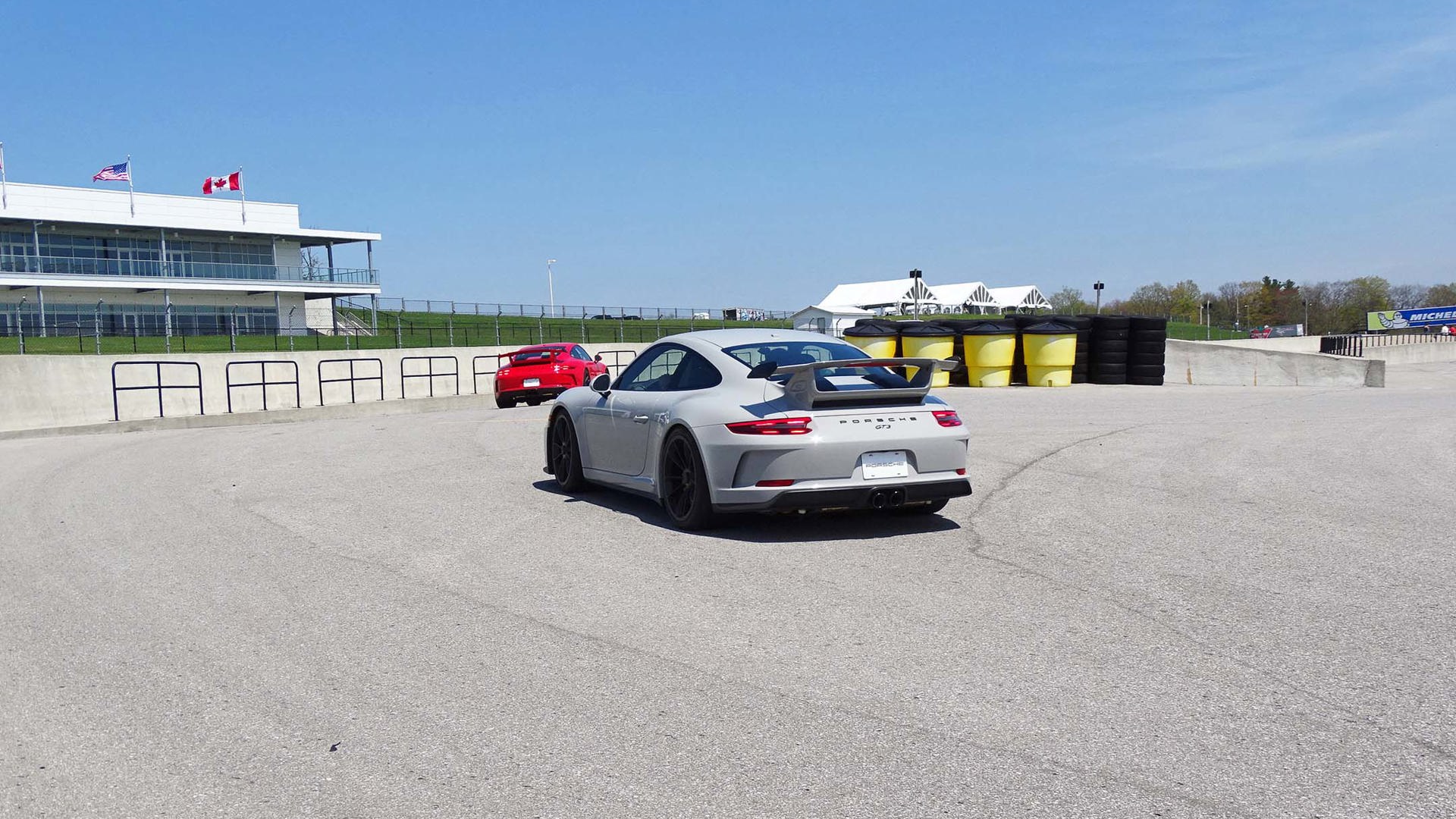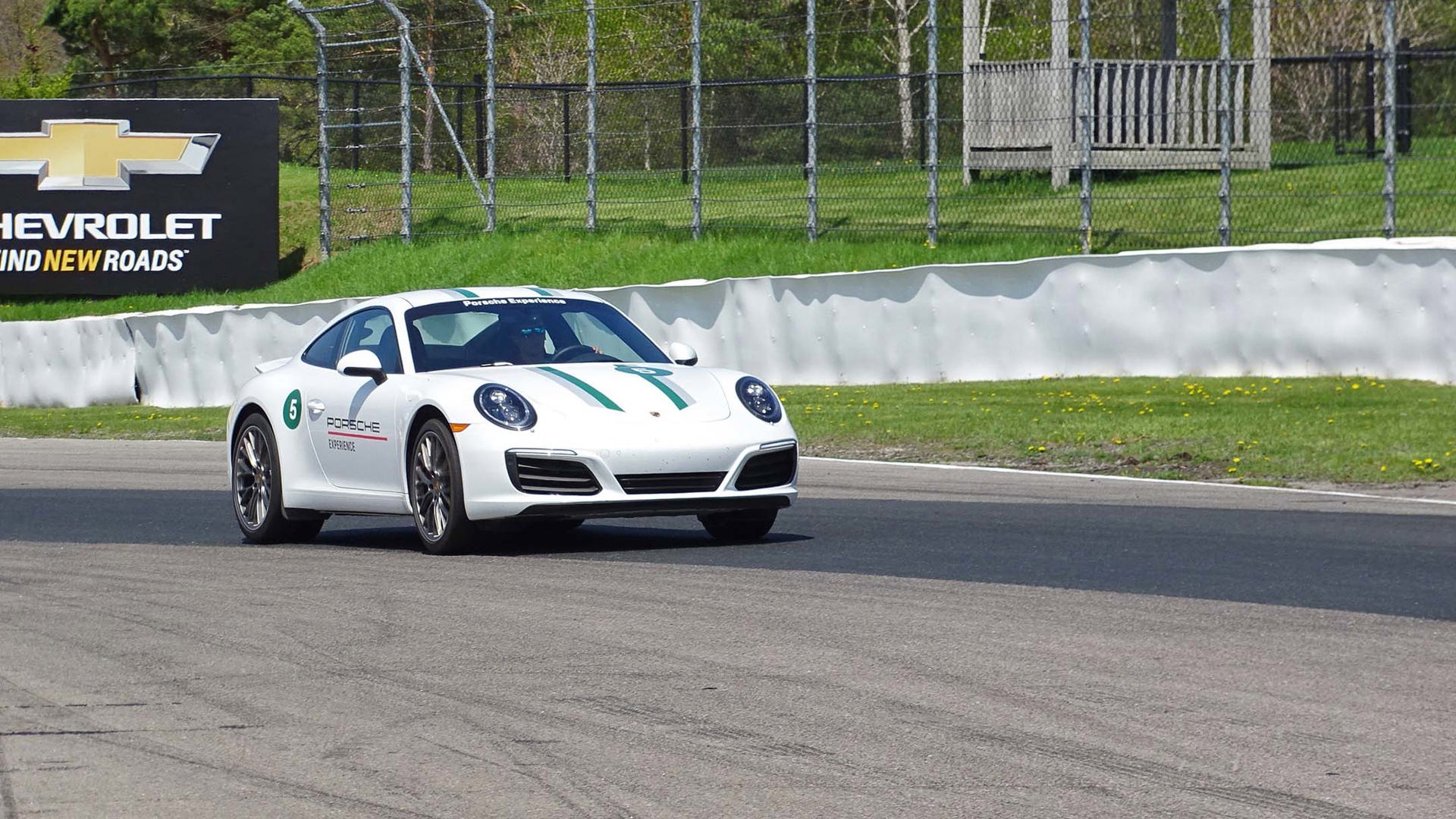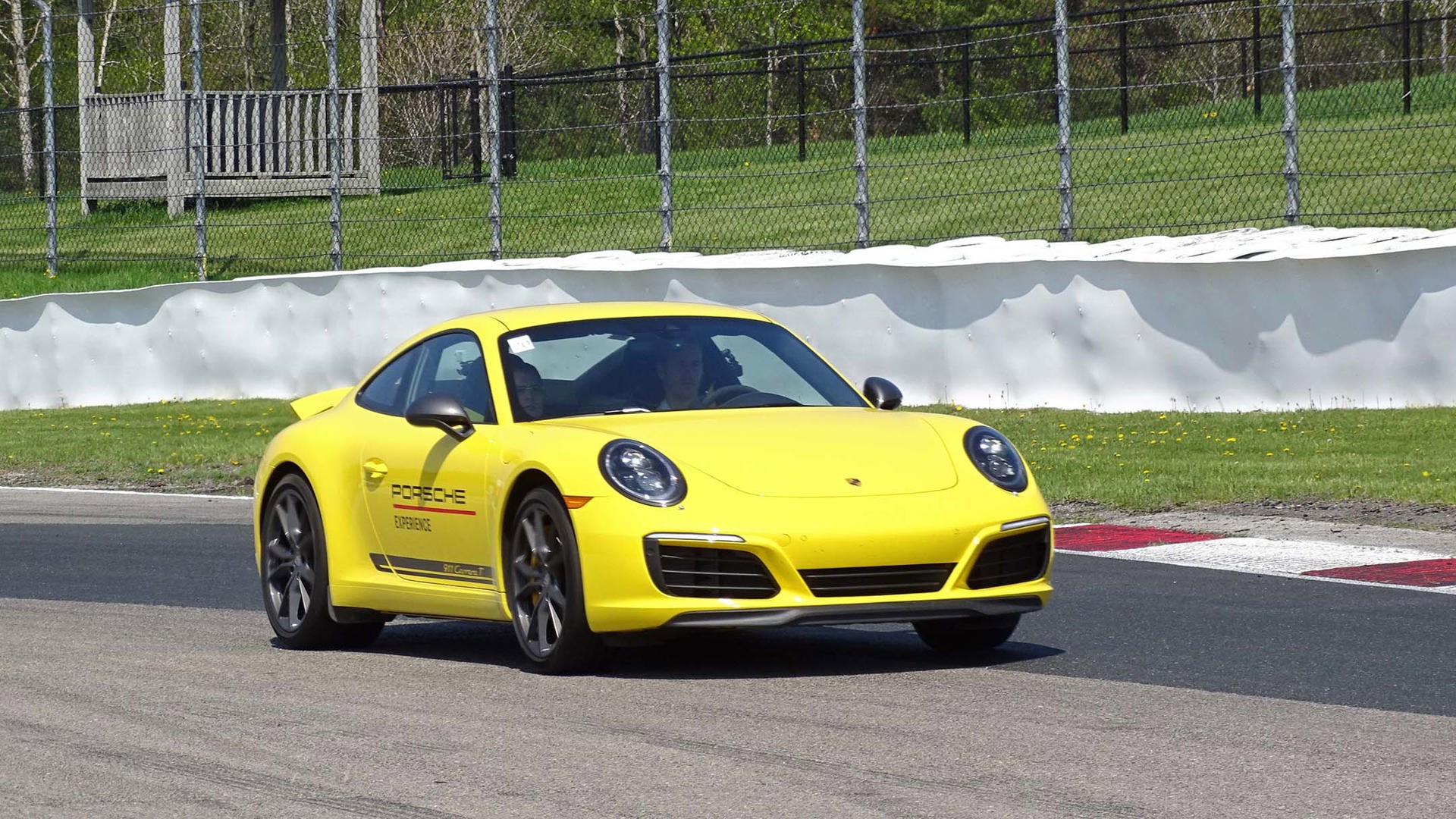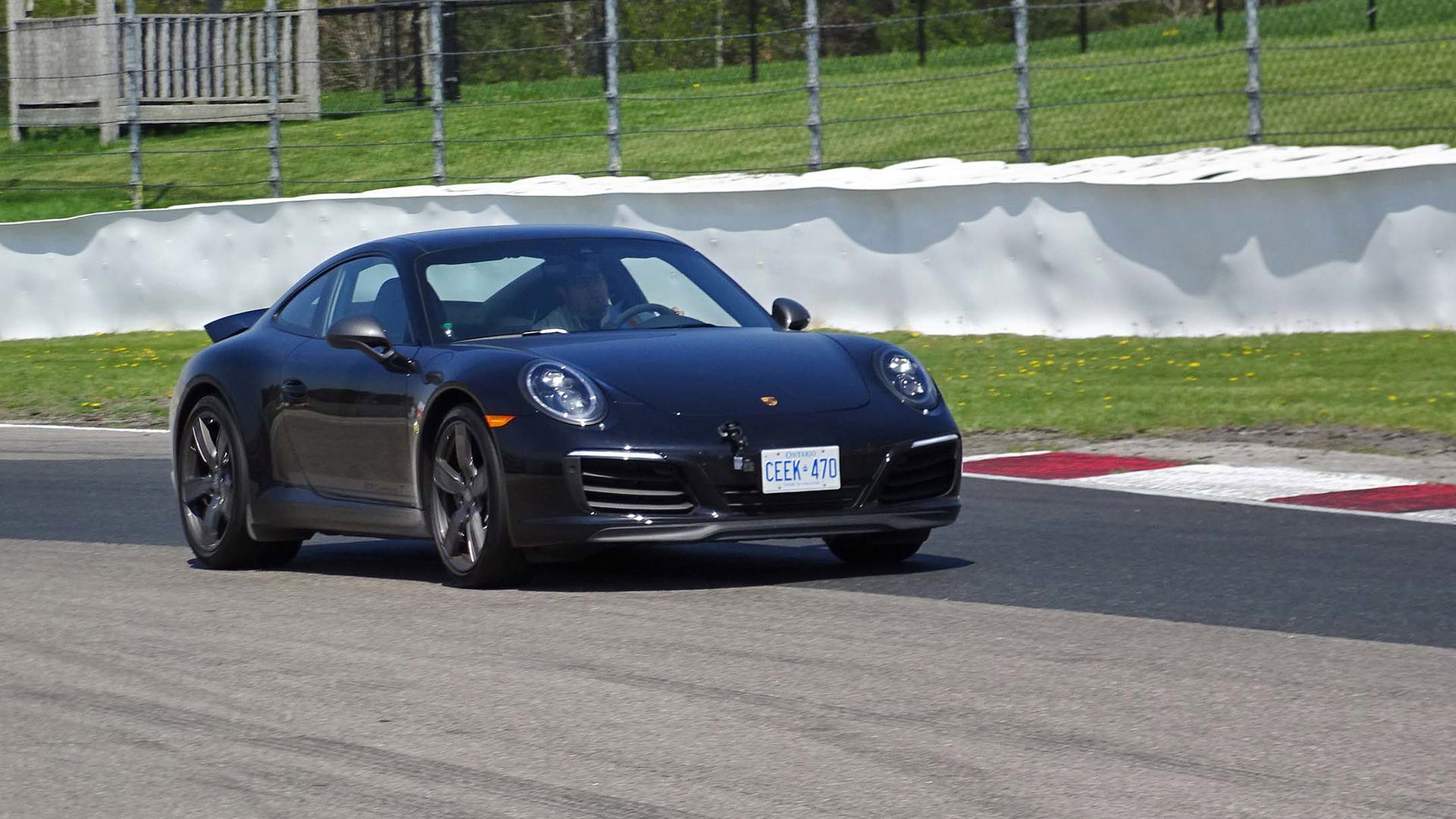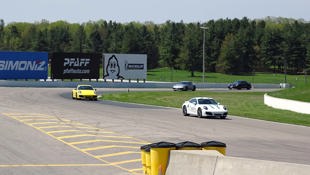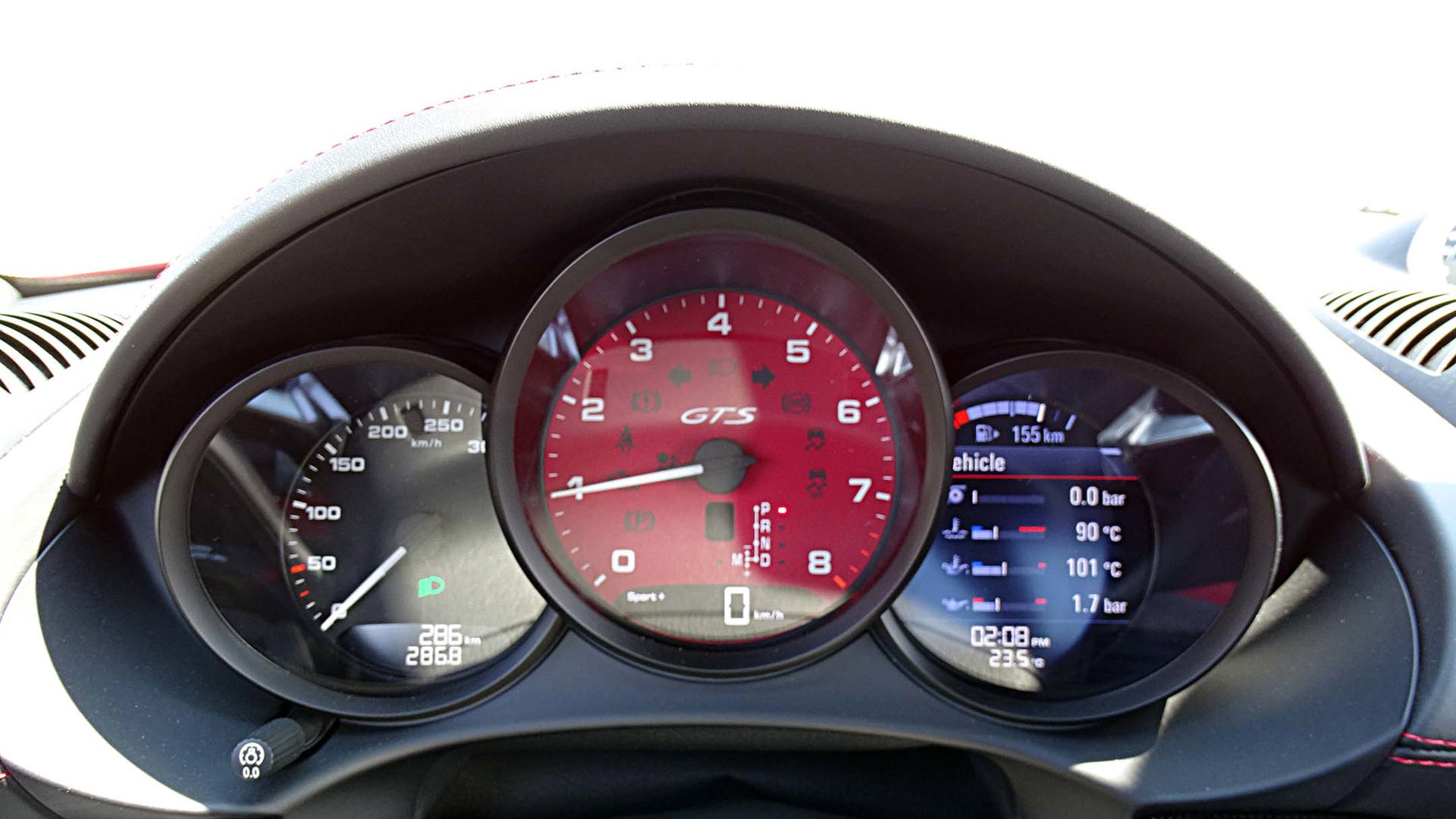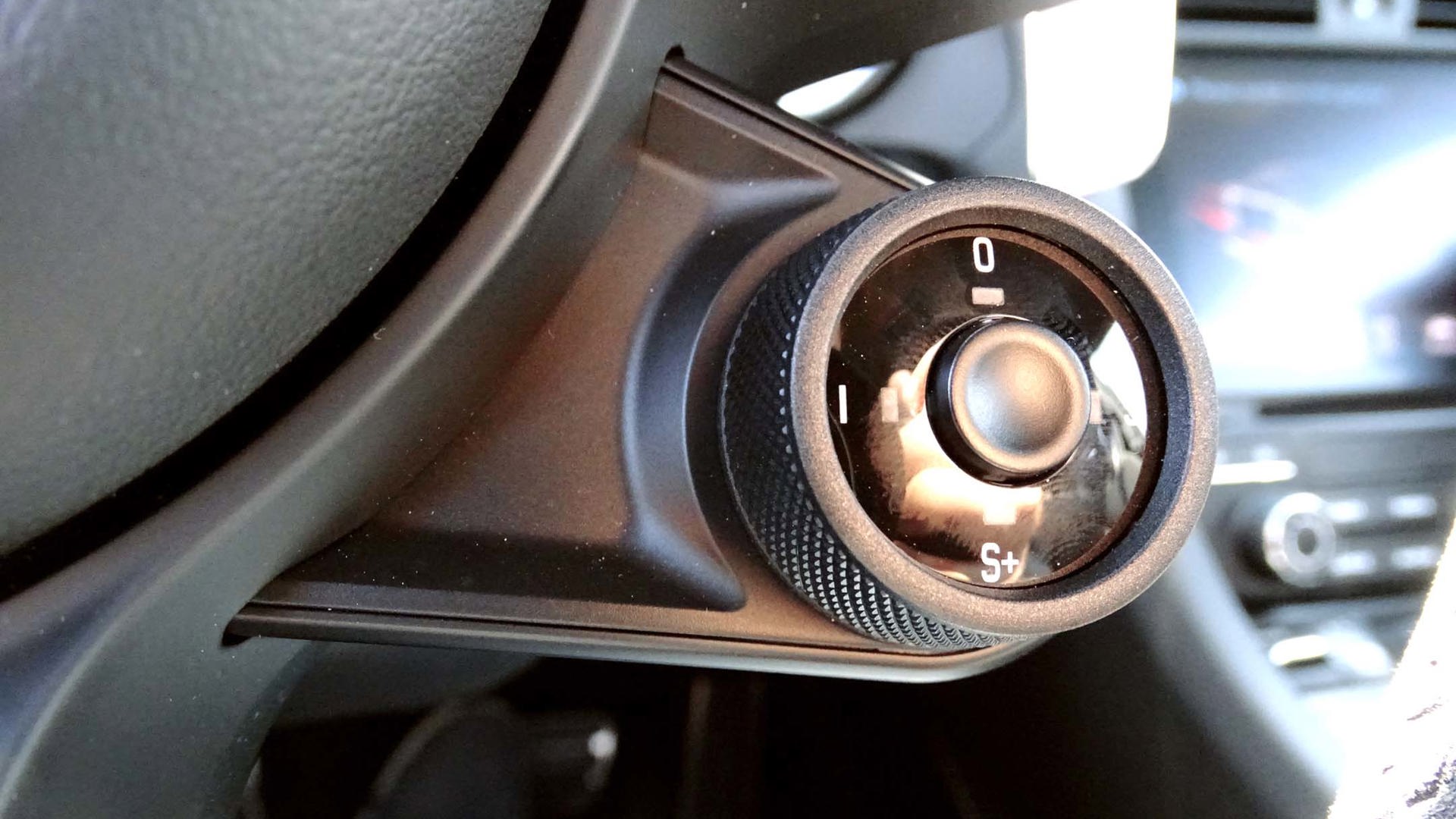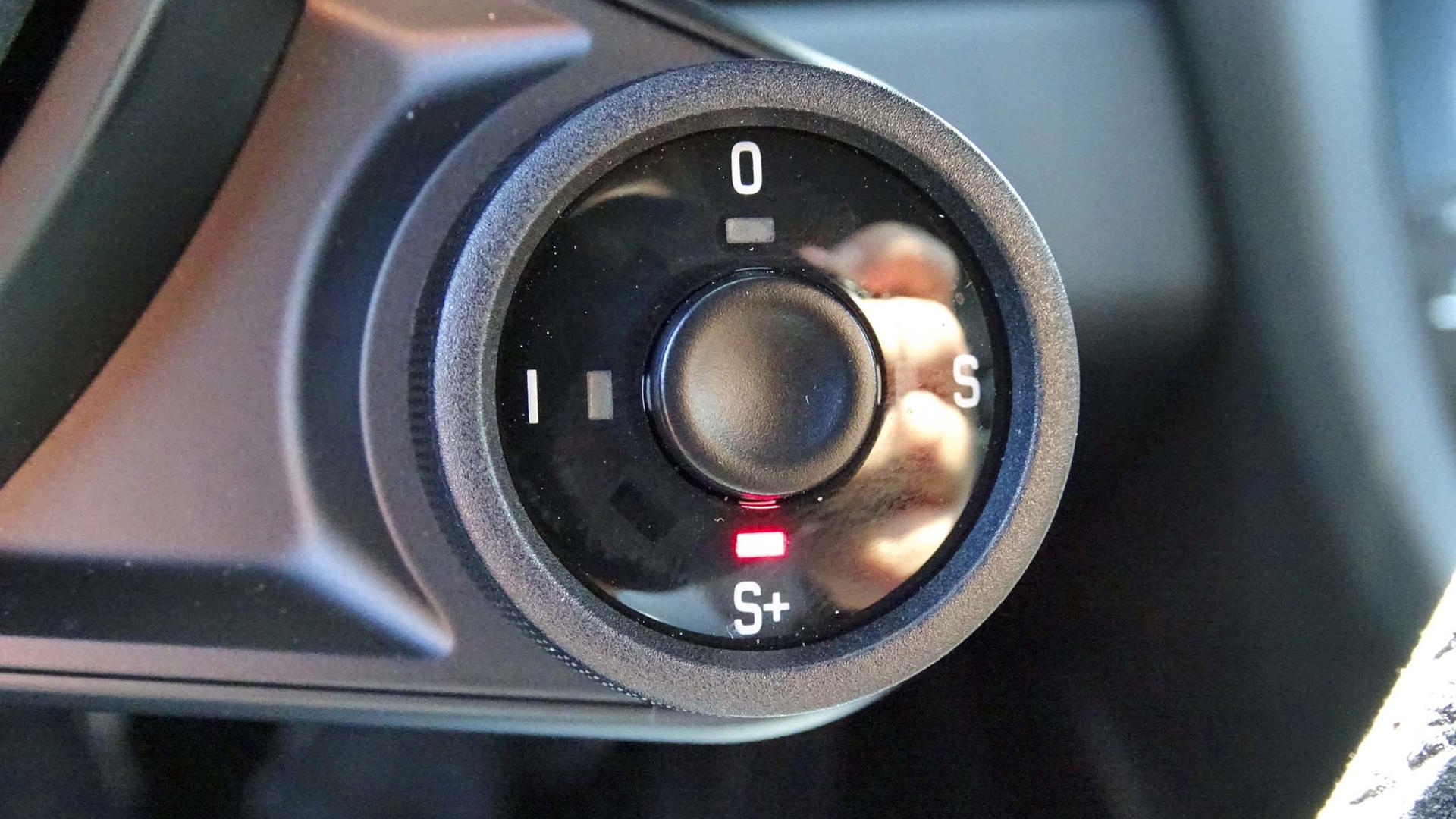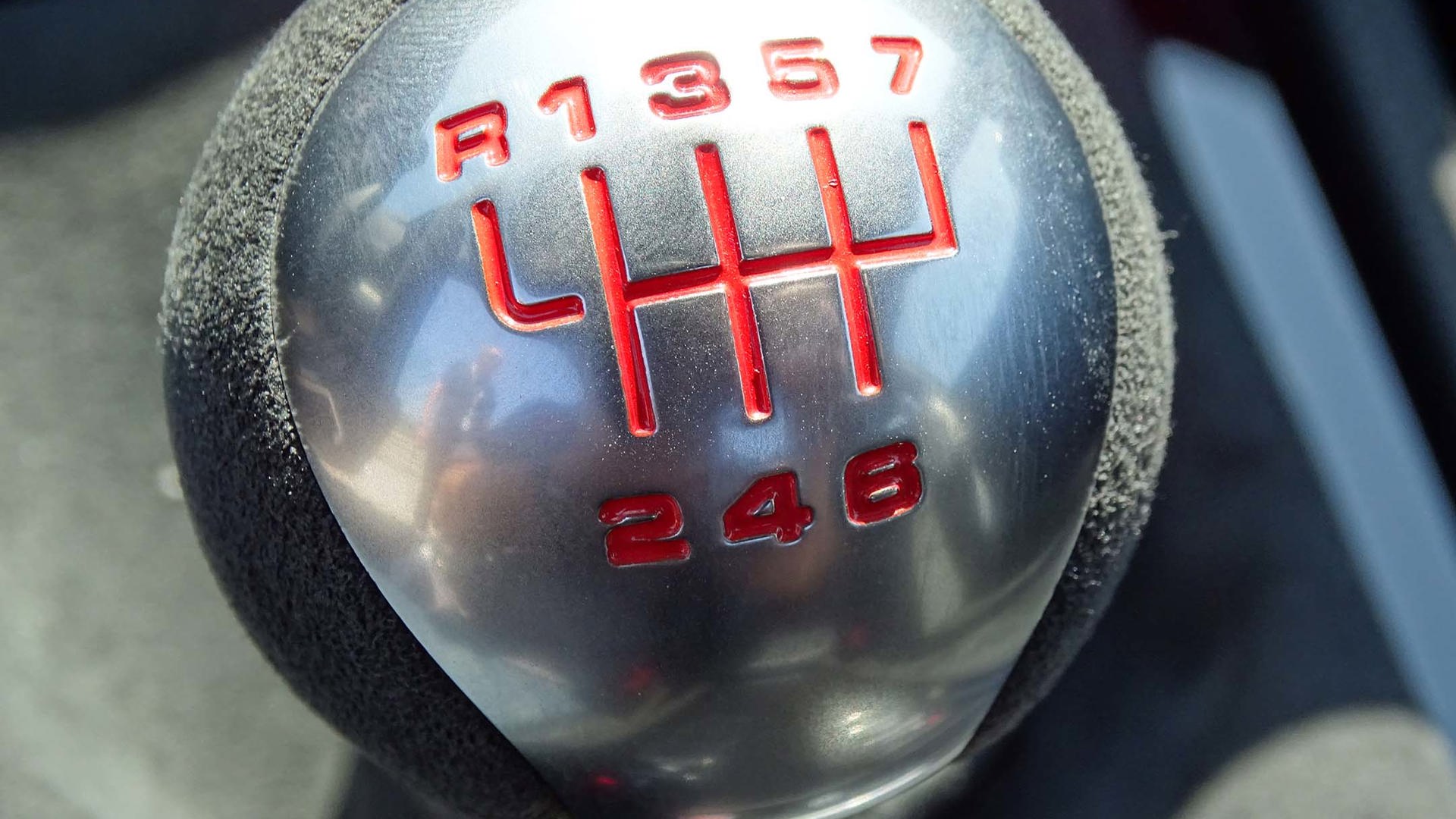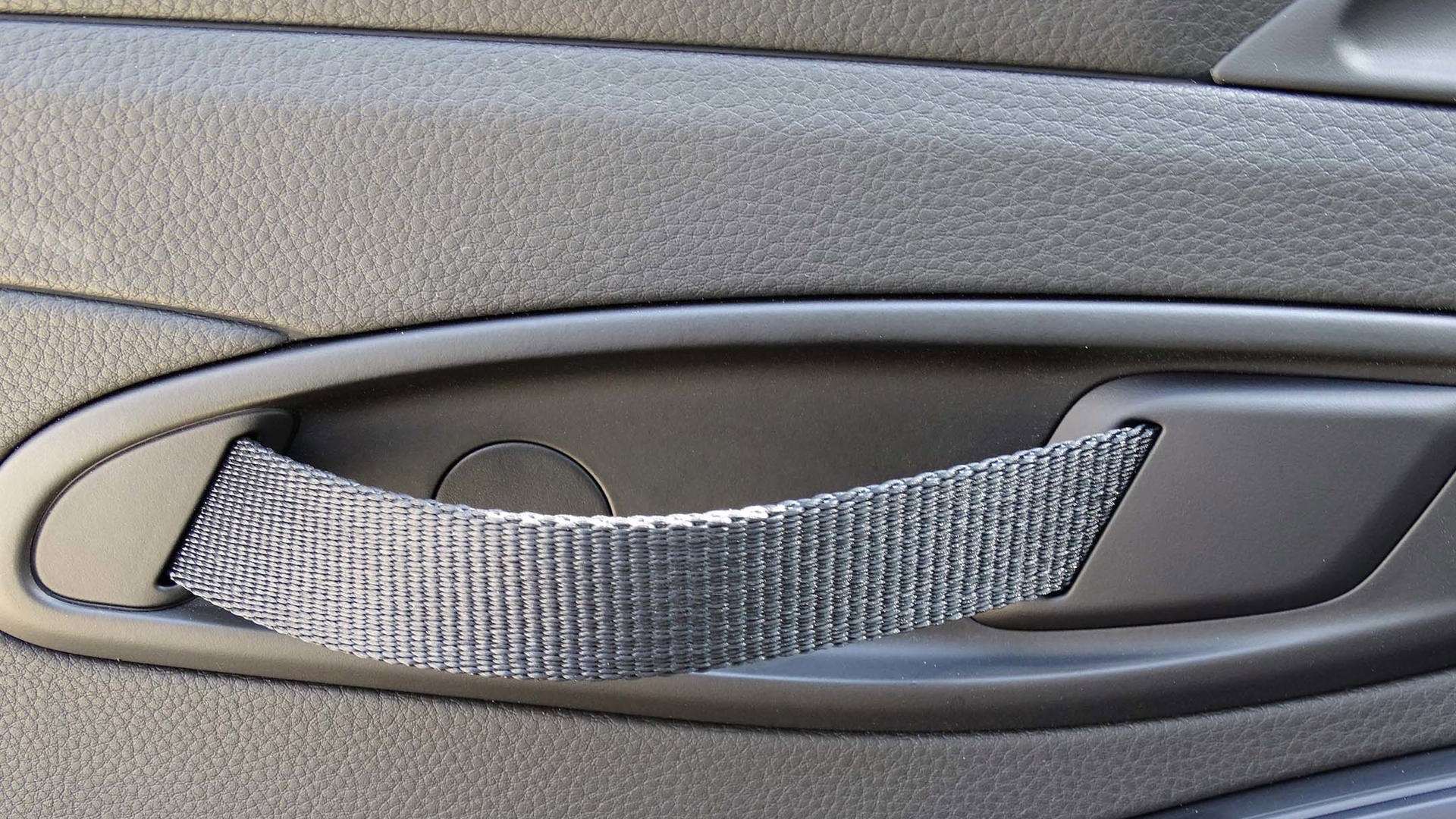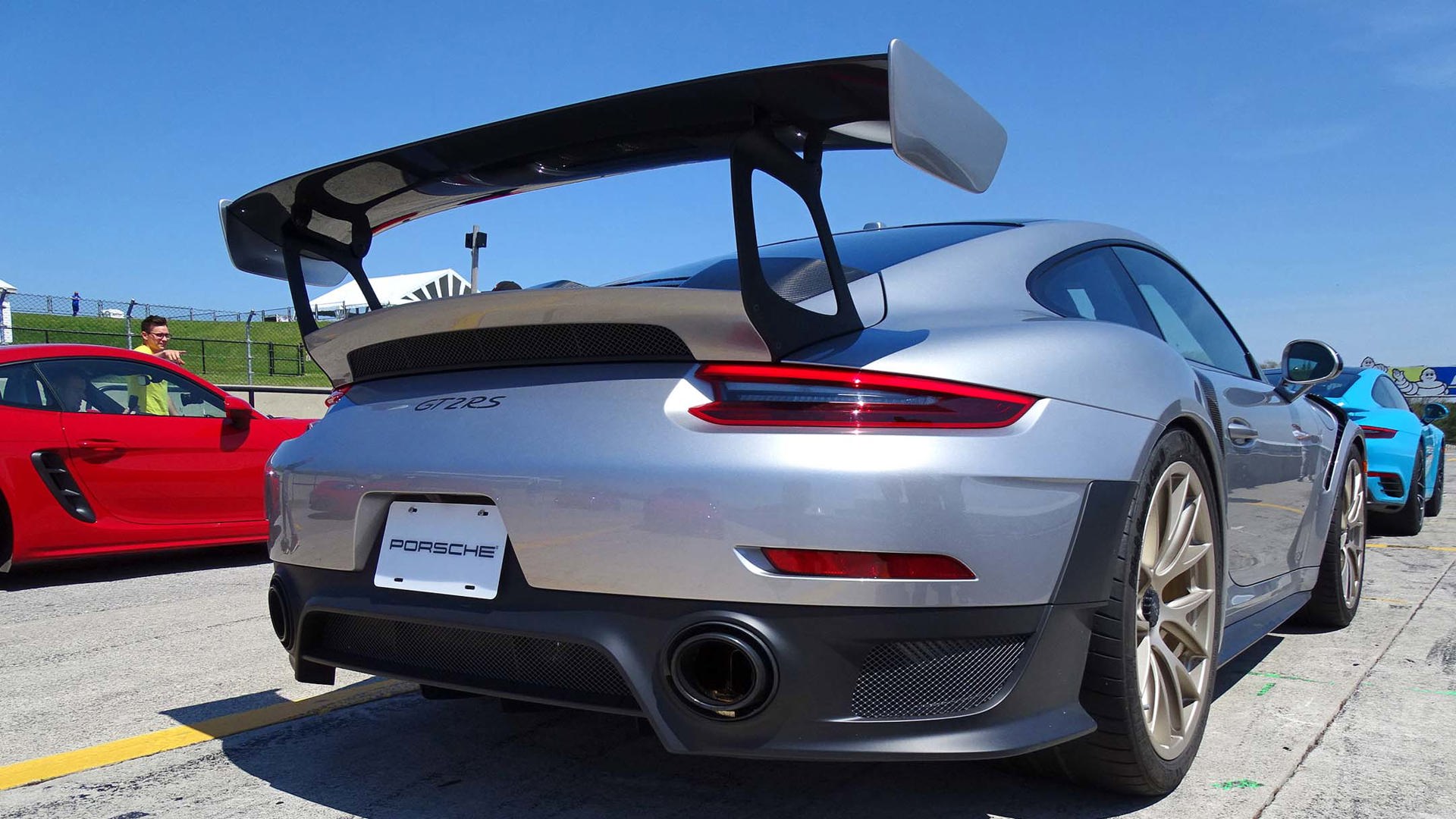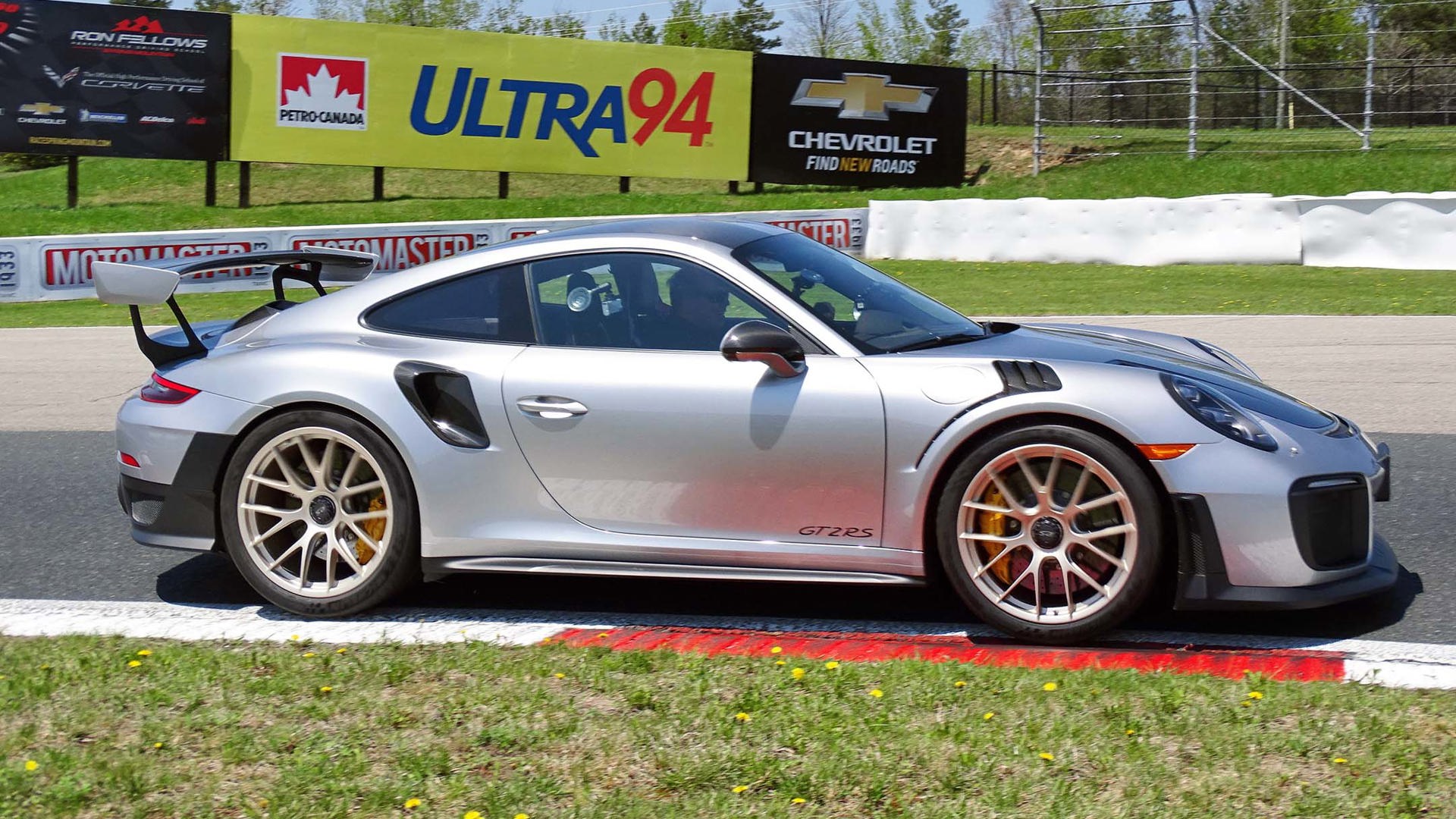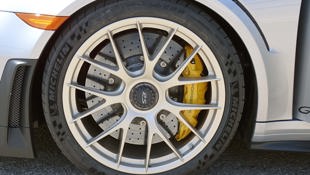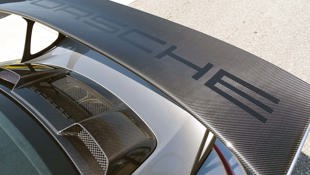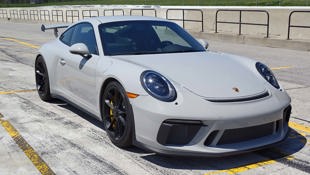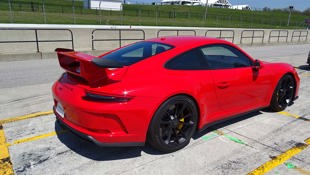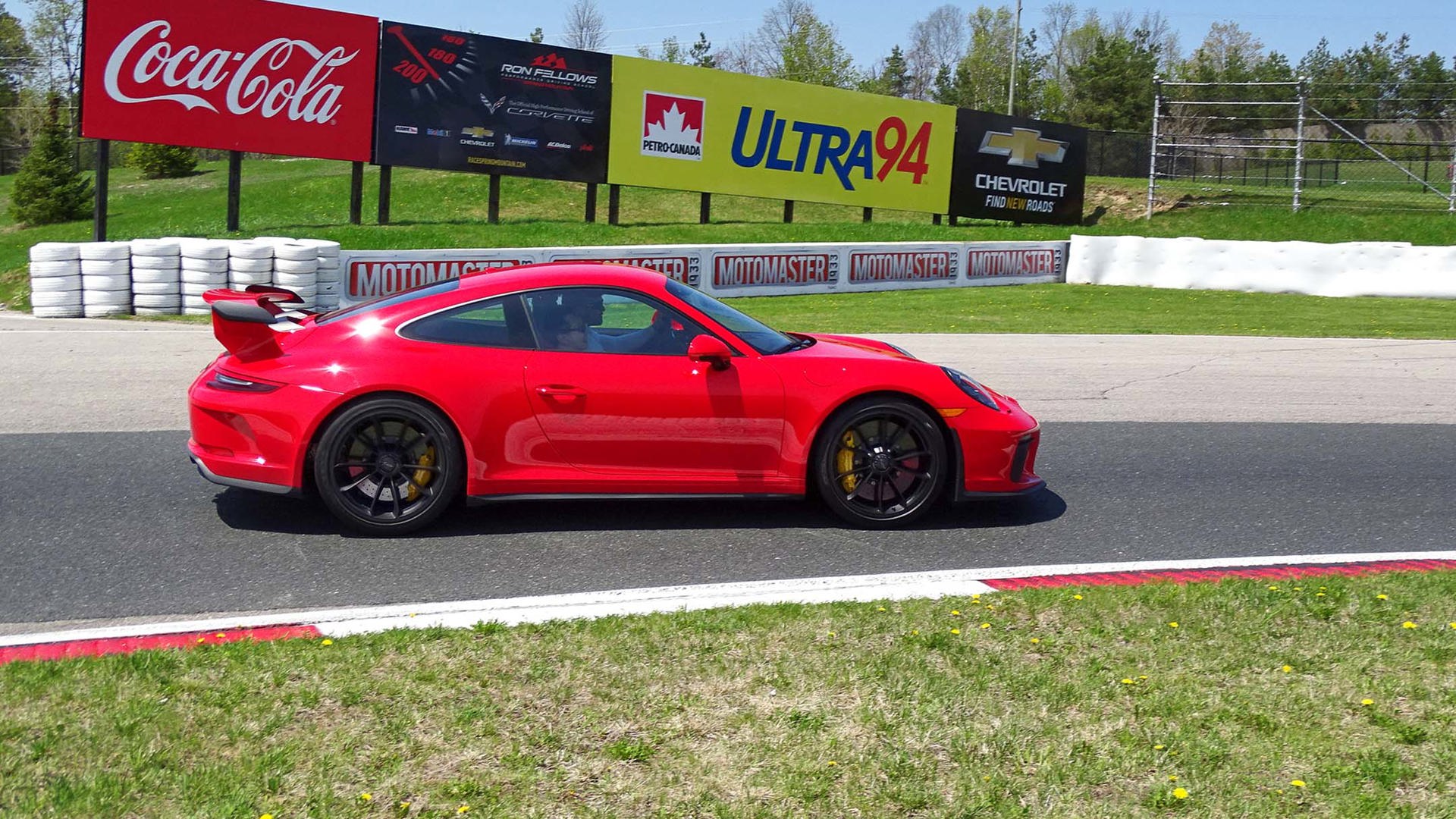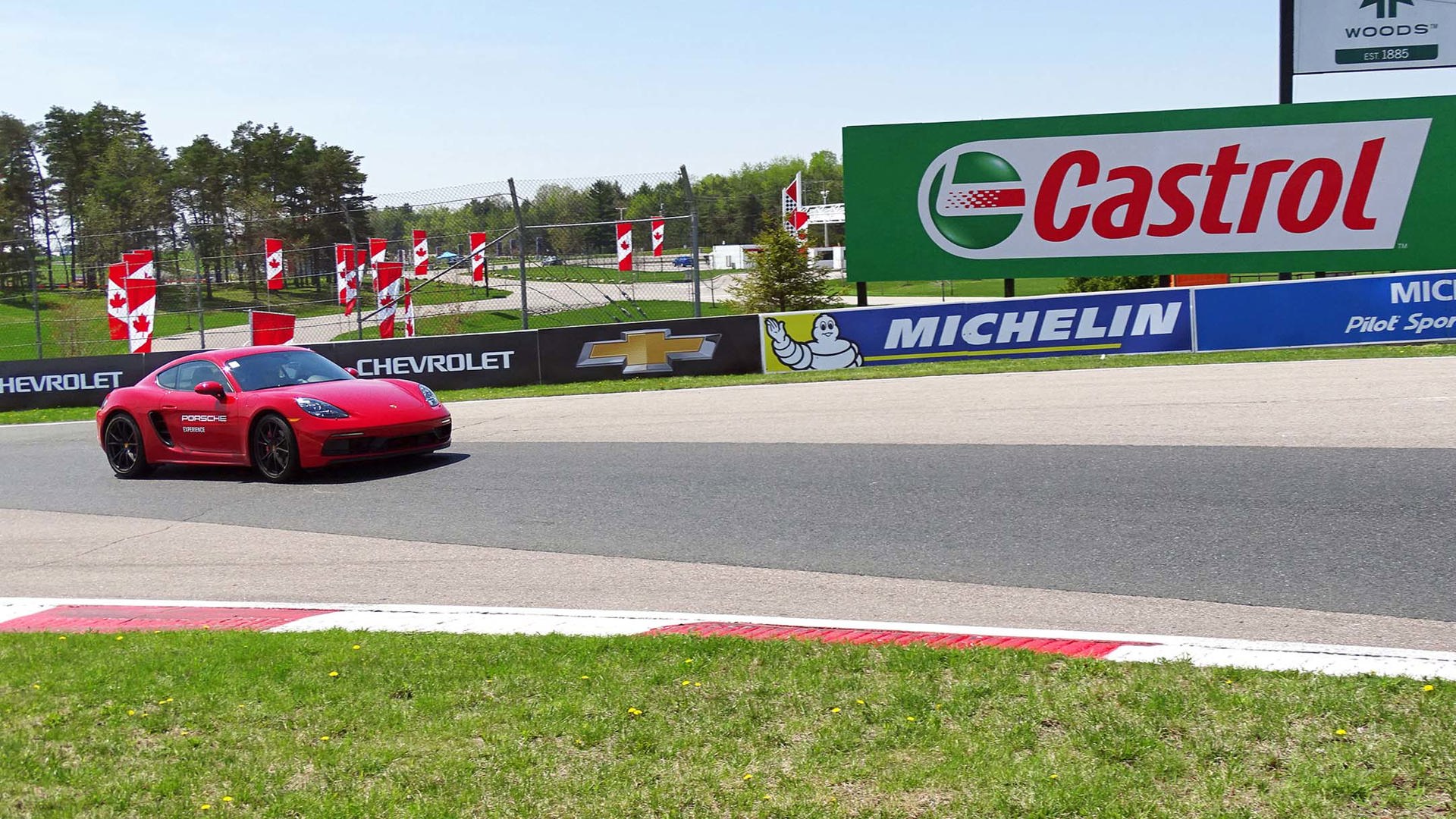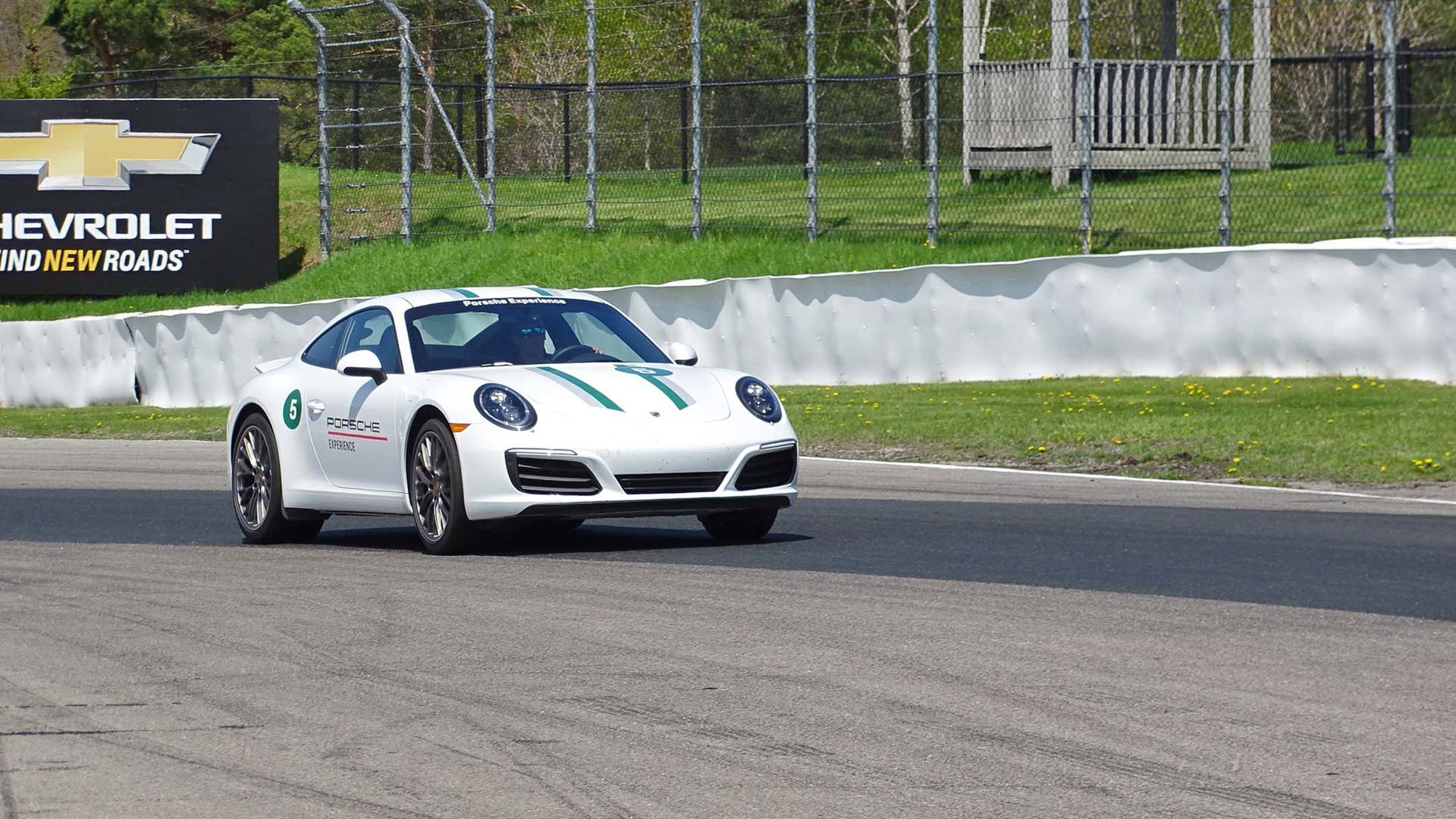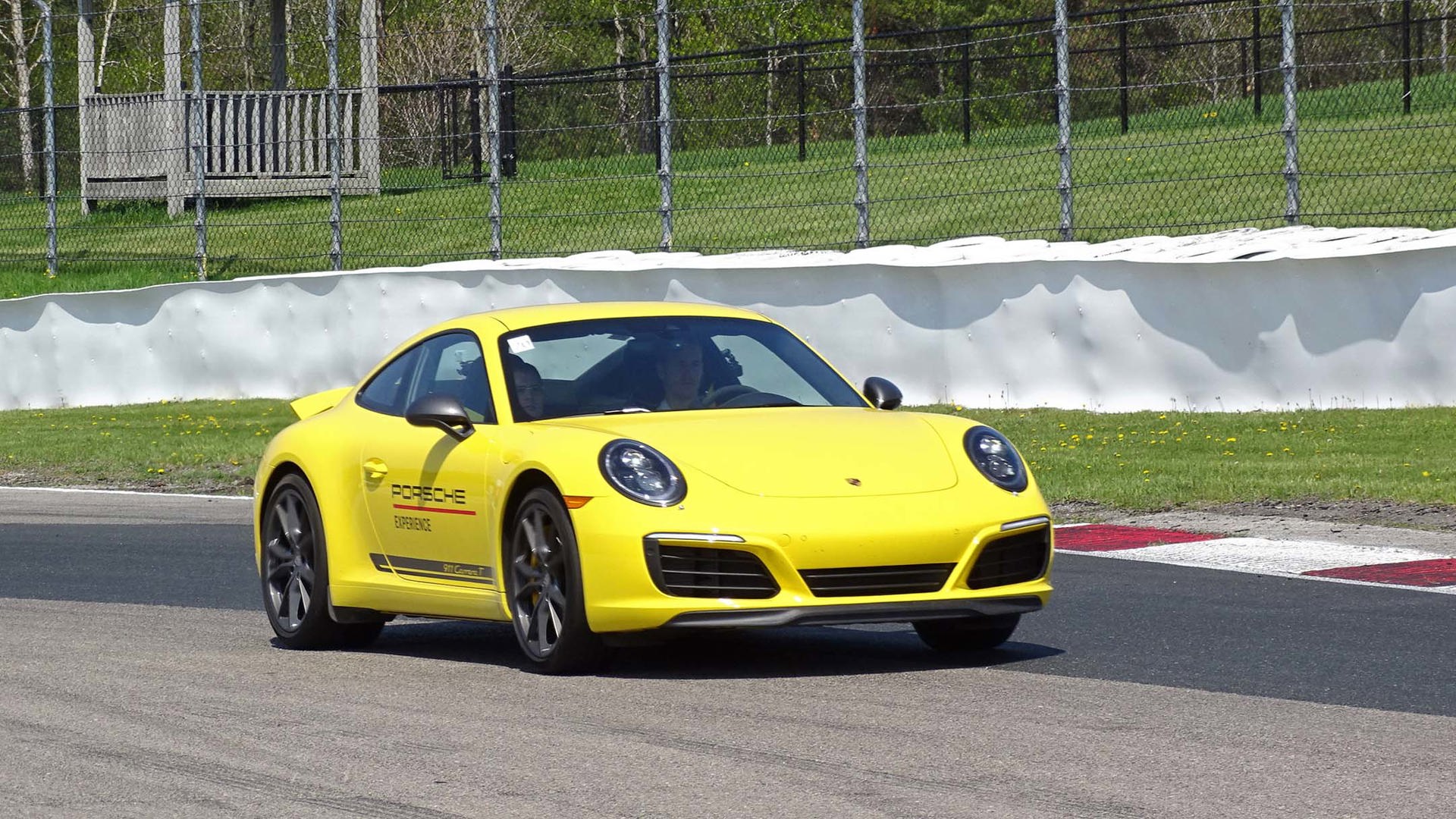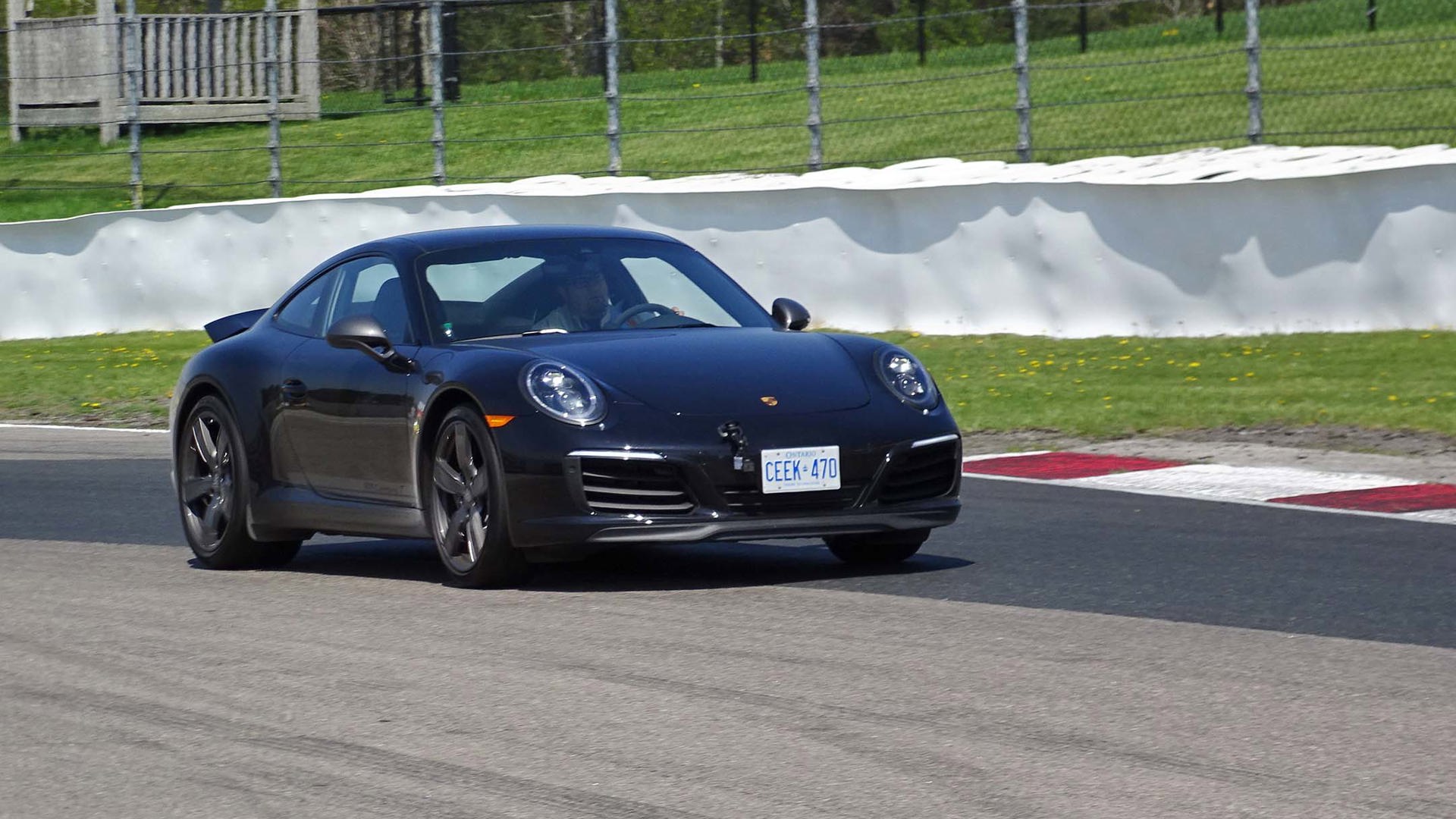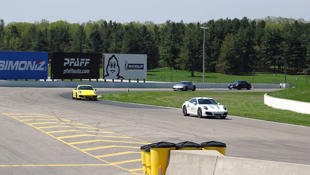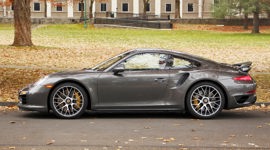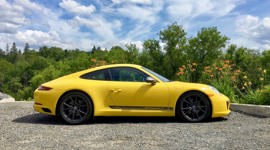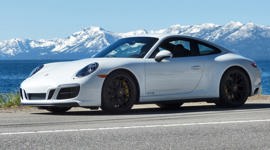The engine screams its way toward the 9,000 rpm redline, the naturally aspirated flat-six turning 4.0L of fuel and onrushing air into the sort of sound that makes people believe in God. The needle on the speedo climbs past 250 km/h and the steering gets light. The Porsche 911 GT3 crests the rise on Canadian Tire Motorsport Park’s back straight, and I can feel every ripple in the road through my backside. On the brakes, the back end squirms ever so slightly and the front picks up load and grip before we turn in to the next corner.
Savage, and intense, and hits you right in the centre of your chest.
My heart is pounding in my chest, eyes wide, breathing shallow, concentration at its peak. I’m pushing my comfort levels, but the 911 GT3 isn’t even breaking a sweat.
It’s times like this I realize the chasm between me and a proper racing driver. I couldn’t care less. This is a ballistic amount of fun, and this isn’t even the good one.
Porsche 911 GT2 RS
Porsche’s invite had said nothing about the presence of this car, and yet, here it is. Draped in carbon-fibre and resplendent with Weissach-package magnesium wheels, the Porsche 911 GT2 RS sits in pit lane.
There will only be 100 of these 911s in Canada. The pinnacle of the 911 lineup, the 2018 GT2 RS is the first in the 991 generation of 911s. Confused? Me too.
Here’s a number to bring you back to earth: 700 hp. That was the target for the 3.8L bi-turbo flat-six. Porsche achieved that number, as well as 553 lb-ft of torque, all in a package that weighs just 1,470 kg. It will hurtle to 100 km/h in 2.8 seconds – 200 km/h in 8.3. Top speed is a whopping 340 km/h. That’s 47 km/h faster than the Carrera T, which also has a bi-turbo 3.8L six and takes 4.5 seconds to get to 100 km/h.
To achieve all this, the GT2 RS gets new intakes and a larger turbo. There’s a water-injection system for cooling the intercooler too. It sprays directly onto the intercooler and comes on automatically when the engine bay temperature reaches 50 degrees. Its five-litre tank of distilled water will be quickly depleted, but can be refilled via a cap in the frunk.
The Weissach package reduces weight by 17 kg – that’s before you add the wheels, which are now sold separately to the whole package. Those wheels save a further 11.5 kg. Weissach models get a magnesium roof, carbon-fibre paddle shifters, and a carbon-fibre wheel insert. It also gets a sway bar that is lightened by 5.3 kg and a carbon-fibre coupling rod. Of course, the suspension is all fully adjustable.
Porsche added ball-joint mounts to aid stiffness, and softer sway bars to increase compliance and road-feel.
The only external panels shared between the GT2 RS and any other 911 are the doors. The rest is GT2 RS–only. That includes the fender louvres, and NACA ducts in the hood, all for reduced drag and more efficient cooling. It also includes the removable aerodynamic blocks. With those out of the intakes the GT2 RS makes 416 kg of downforce, versus 312 kg with them installed. It also hurts the 0.35 drag co-efficient.
The result? Ugly, unnatural, and frankly disconcerting noises from the assembled automotive journalists. Each of us who then pretended we could feel a much bigger difference than we actually could out on track.
The GT2 RS is a beast. It is one of the most intense cars I’ve ever driven, and an obvious elevation from the GT3 – but the size of that elevation, at least for us mortals, is not as big as you might think.
Porsche 911 GT3
Especially when you consider the aforementioned redline. The sheer noise of the GT3 makes for one of the most engaging driving experiences available. Like the GT2 RS, the GT3 is a legitimate supercar contender. Its 500 hp/339 lb-ft output might pale in comparison to its new sibling, but the 3.4 second 0–100 km/h time and 1,430 kg curb weight are impressive in their own right.
On track, the GT3 feels composed, tactile, and extreme. You can now get the GT3 with a manual again, after a period of PDK-only GT3s that Porsche somewhat sheepishly has walked back from. The manual is a no-cost option, and it feels brilliant, especially with the automatic rev-matching and well-defined gates. The shift action is superb, the placement and weight of the lever perfect.
Driving the manual and PDK back-to-back was humbling. Manual is better, obviously, but the PDK rifles off impossible speed shifts with complete and utter disdain. It’s like the gearbox knows you like manuals, and wants to violently eradicate that notion from your skull.
You can also get the GT3 now with the Touring package, which deletes the rear wing and swaps all the Alcantara for leather. It’s the GT3 for people who like subtlety. Correction: It’s the GT3 for people would like to think of themselves as subtle. Any actual subtlety is nullified instantly by the engine. Did I mention the 9,000 rpm redline and the sound it makes?
Further improvements to the GT3 are in the form of increased downforce – 20 percent more, and by reducing the oil load inside the engine. It now passes just 70 L of oil a minute, down from 120 L thanks to a new hollow crank that feeds oil more efficiently, and the deletion of the hydraulic valves. Porsche claims their new shim system requires no adjustment – ever.
Porsche Carrera T
No matter which 911 you’re in, the track is a thrilling place to be. The Carrera T is ample proof of that. Not as brutal or visceral as the GT2 and GT3, the T is nonetheless a car that inspires confidence and speed. Settling into the cockpit in the heavily bolstered seats, searching awkwardly for the key (it’s always on the left in Porsches, I always forget that when I get in) and starting the lower-tuned of the 3.8L bi-turbos still feels special.
Sure, it takes 4.5 seconds to get to 100 km/h and yes, the 1,438 kg chassis is not quite as agile as its stablemates, but it is still one of the top-dog 911s, and that means it is still more Porsche than most will ever need. At $116,500 it’s arguably the value proposition in the 23-model 911 lineup. It gets the 20-mm lower Porsche Active Suspension Management (PASM) system, optional rear-axle steering, and torque vectoring with an included LSD. It’s correct wheel drive, not AWD, and comes with a new seven-speed manual, which is similar to that of the GT3. Add the lightweight glass, optional carbon-fibre bucket seats, and rear-seat deletion – and this T moves further from “road car” to “track car”.
Remember when I said before that the GT3 was barely breaking a sweat? I would put strong money on my lap times in a Carrera T being the exact same as my times in a GT2 RS or GT3. Swap the organic component for chief Porsche instructor, Jonathon Urlin, or our guide for the day, Zacharie Robichon, and that changes dramatically, but I will hit my personal limit long, long before the car hits its.
That’s mildly hyperbolic. The T is clearly not as powerful, nor as planted as the other two, but it’s close. When you distill the essence of driving down, it’s about smoothness and finesse, and the T gives most drivers an excellent platform on which to develop their finesse.
But seriously though
Which matters not a jot, of course. The experience on offer from the GT2 RS and GT3 is above and beyond. It’s savage, and intense, and hits you right in the centre of your chest. The choice between those cars is harder, as one is the fastest, most powerful, and most extreme iteration of 911, while the other is the most visceral, raw, and pure version. Personally, I prefer the GT3, for that engine note. I would happily forgo the extra power, the prestige, and the technical marvel of the RS for the banshee wail of the GT3.
Did I mention it has a 9,000 rpm redline?
Pricing: 2018 Porsche 911
2018 Porsche 911 Carrera T: $116,500
2018 Porsche 911 GT3: $163,300
2018 Porsche 911 GT2 RS: $334,000
